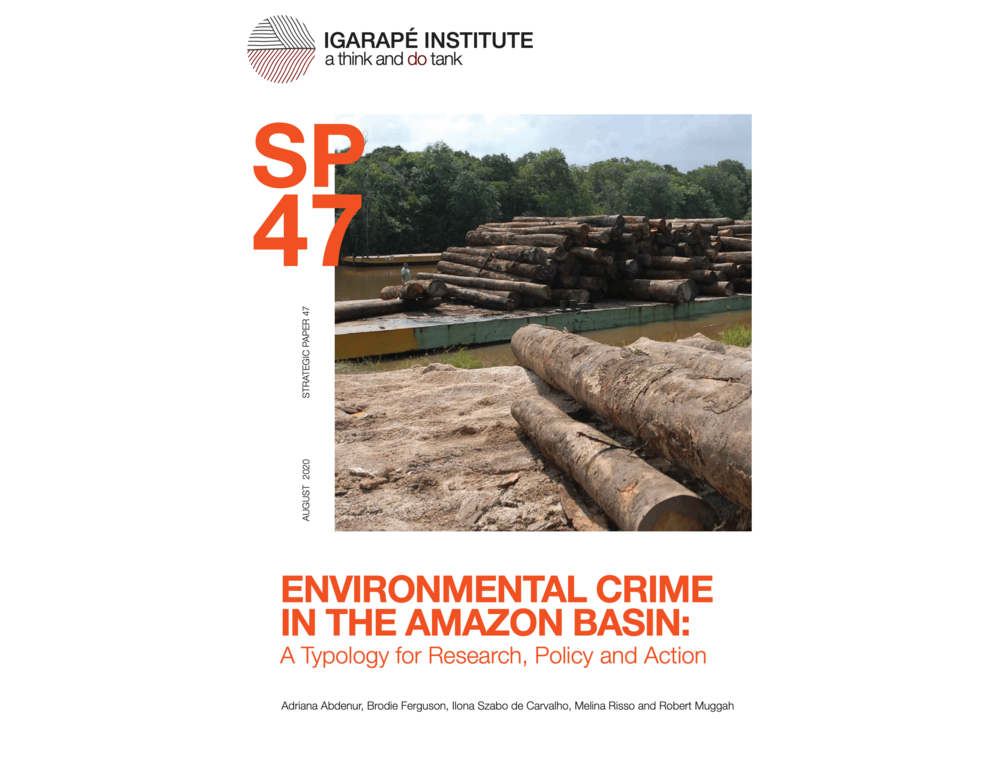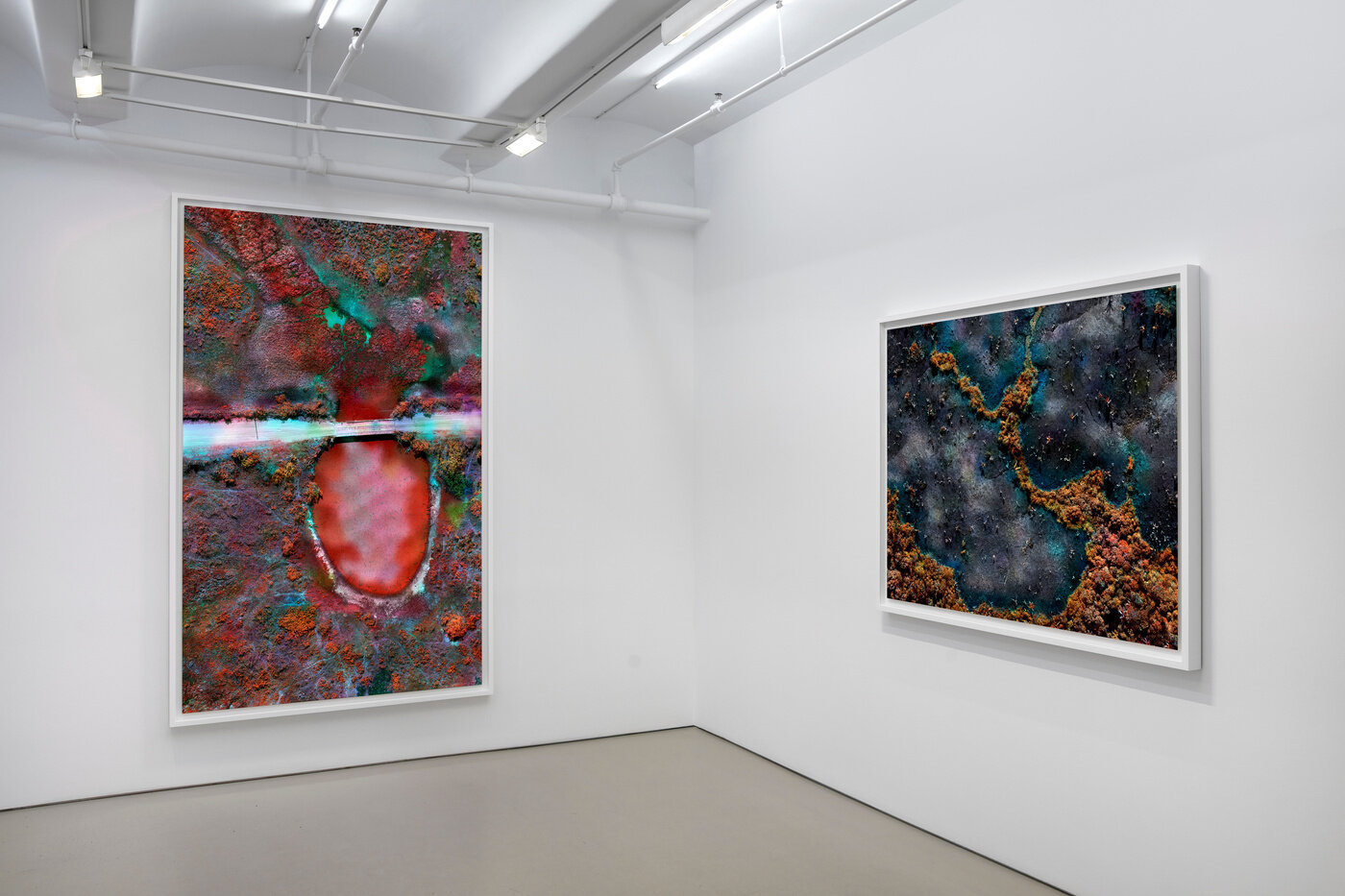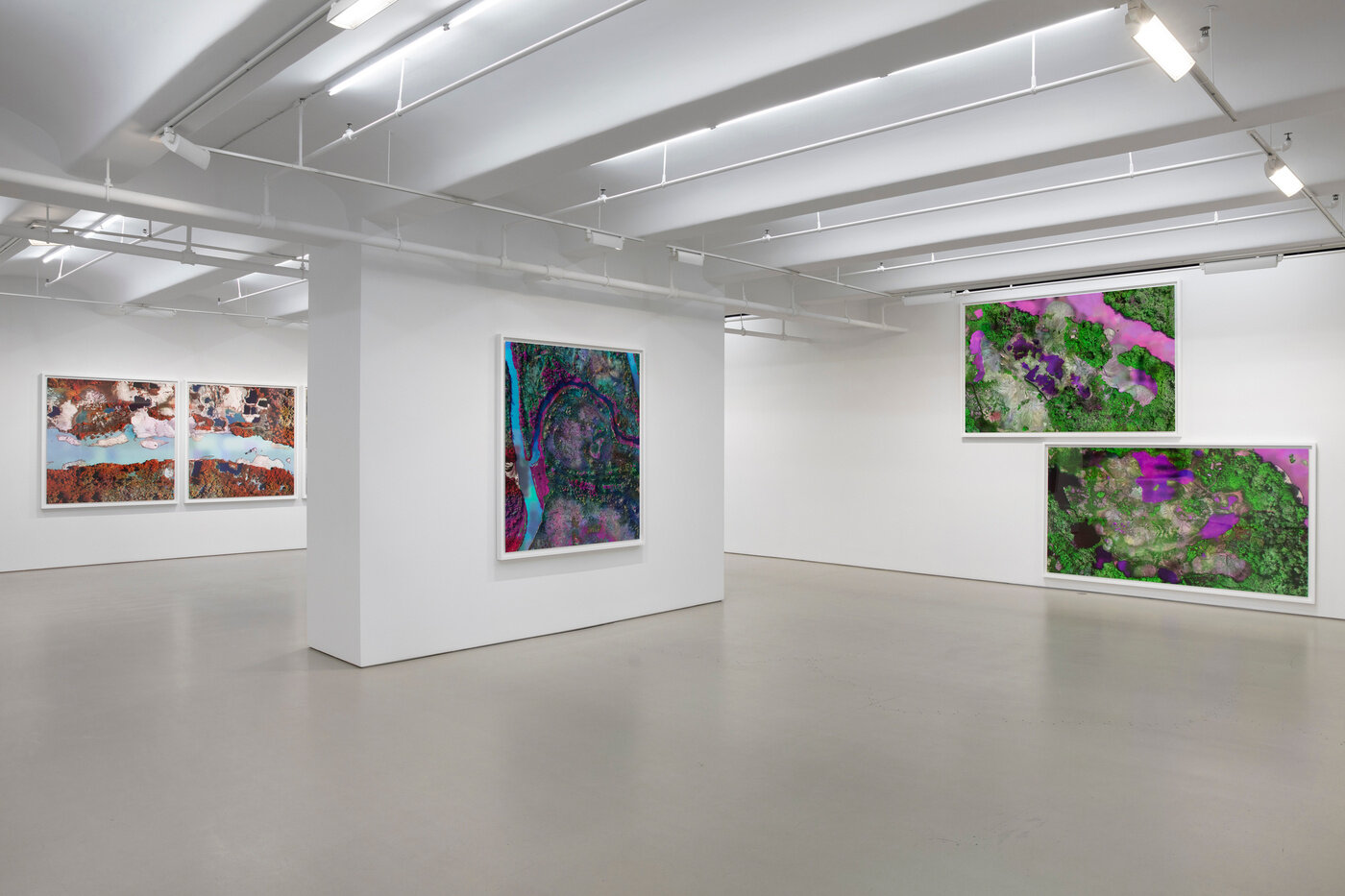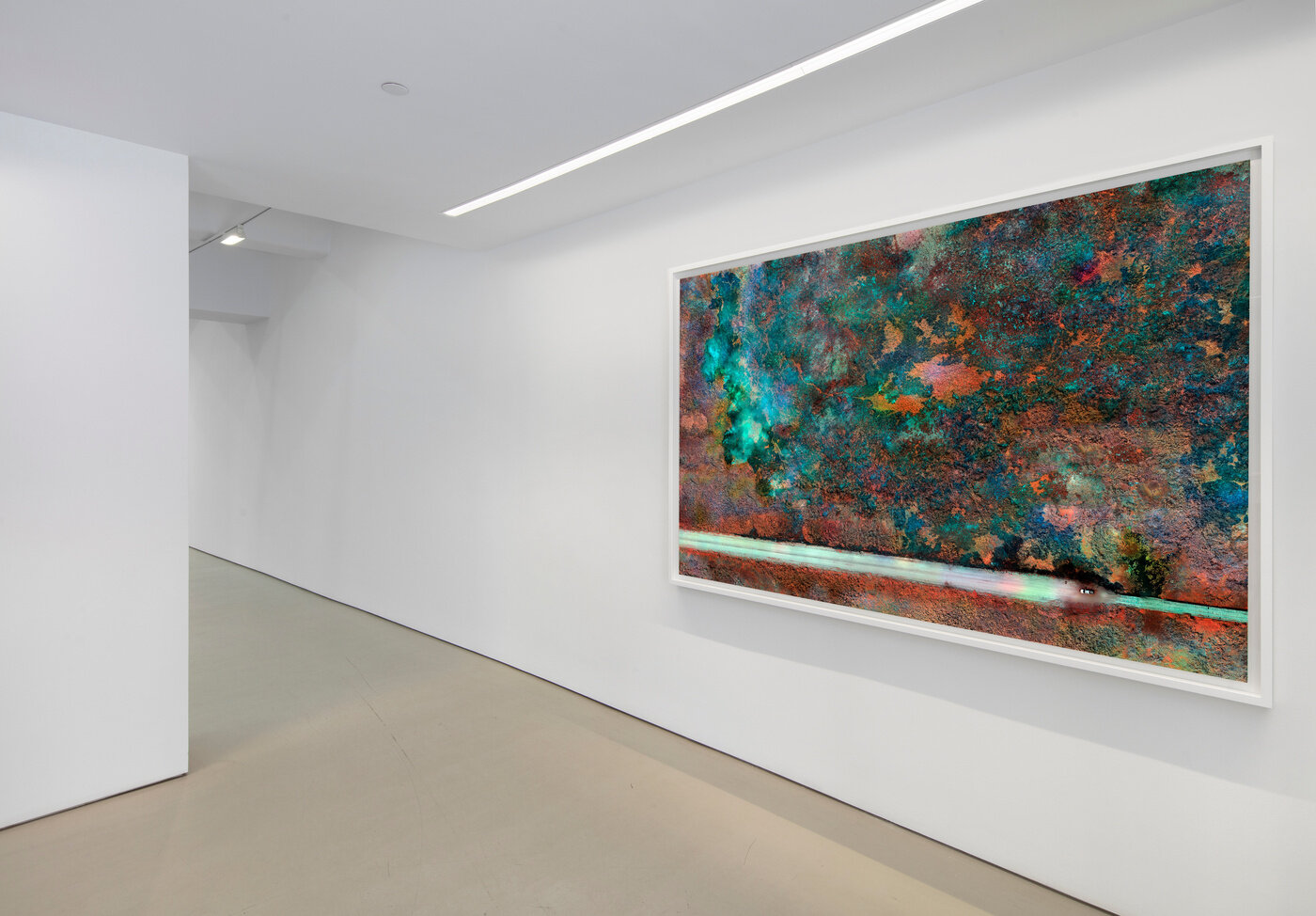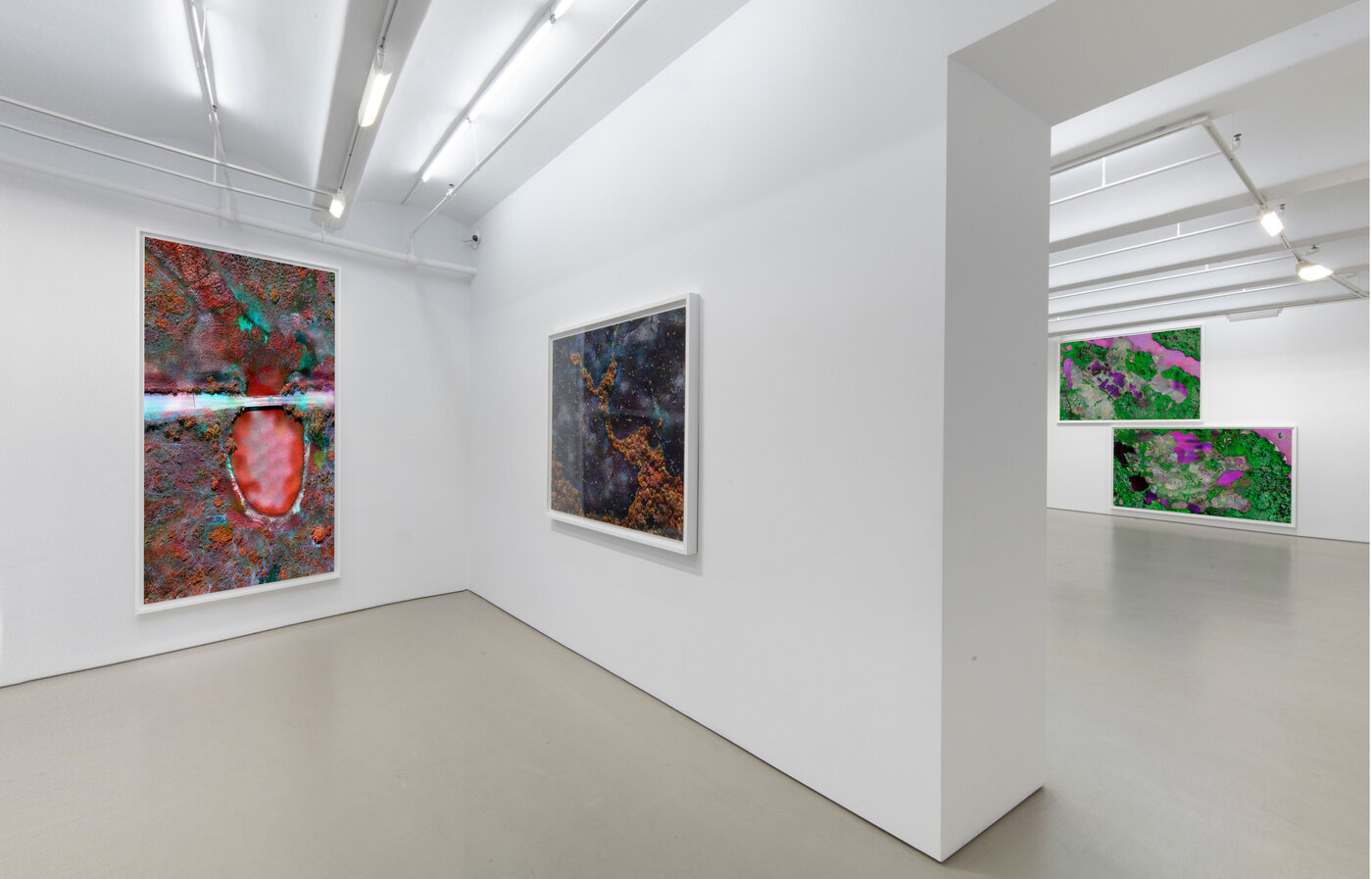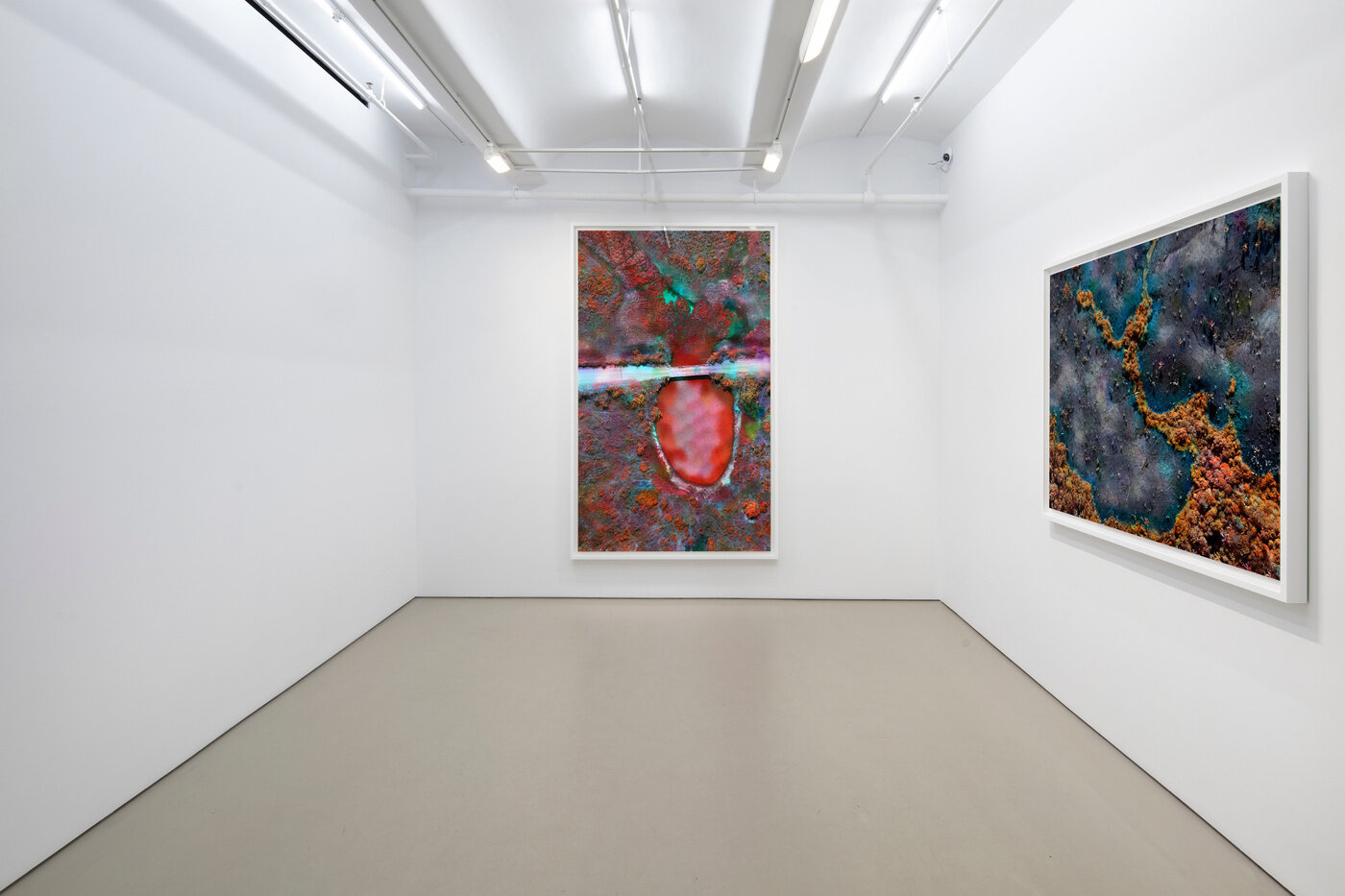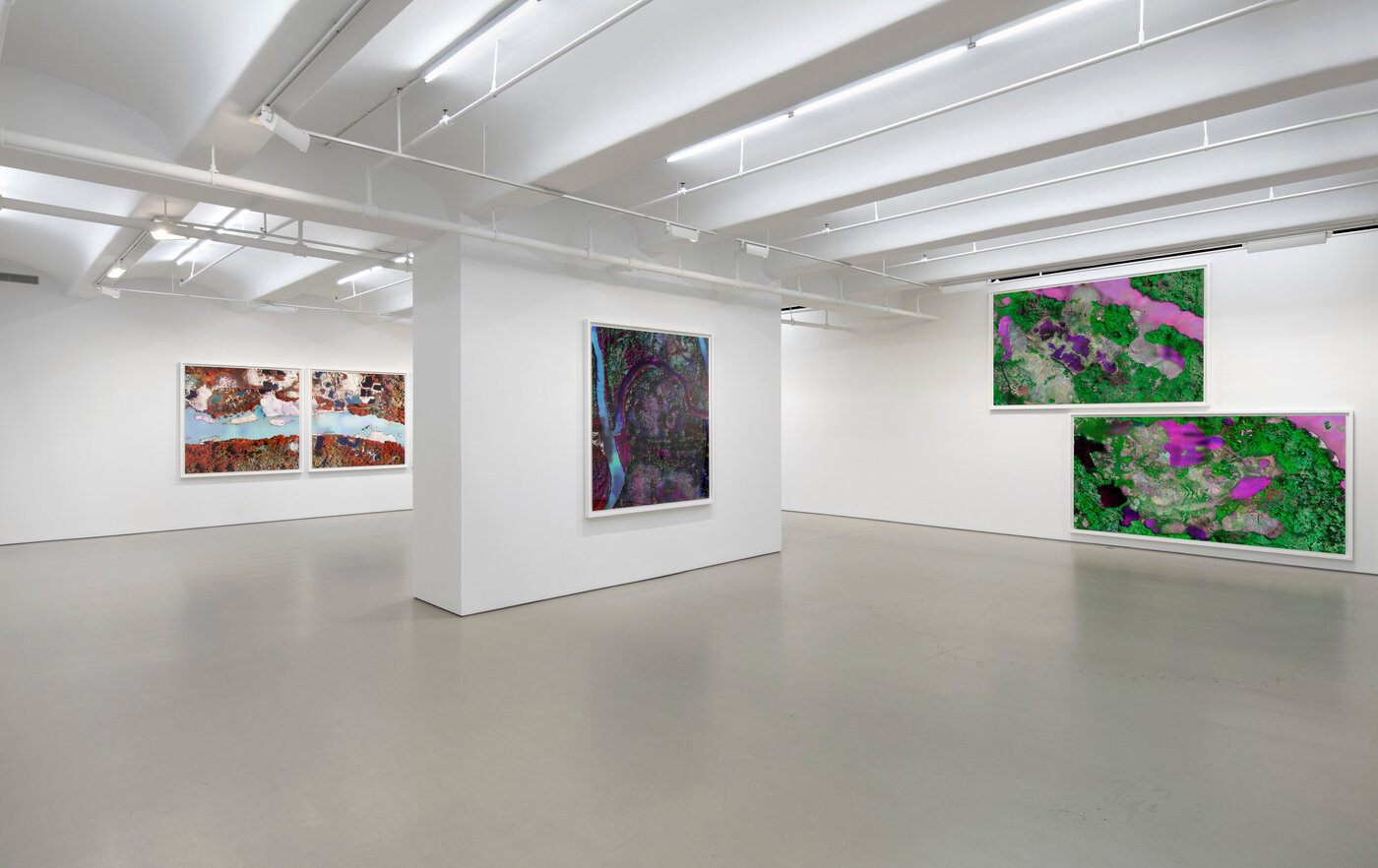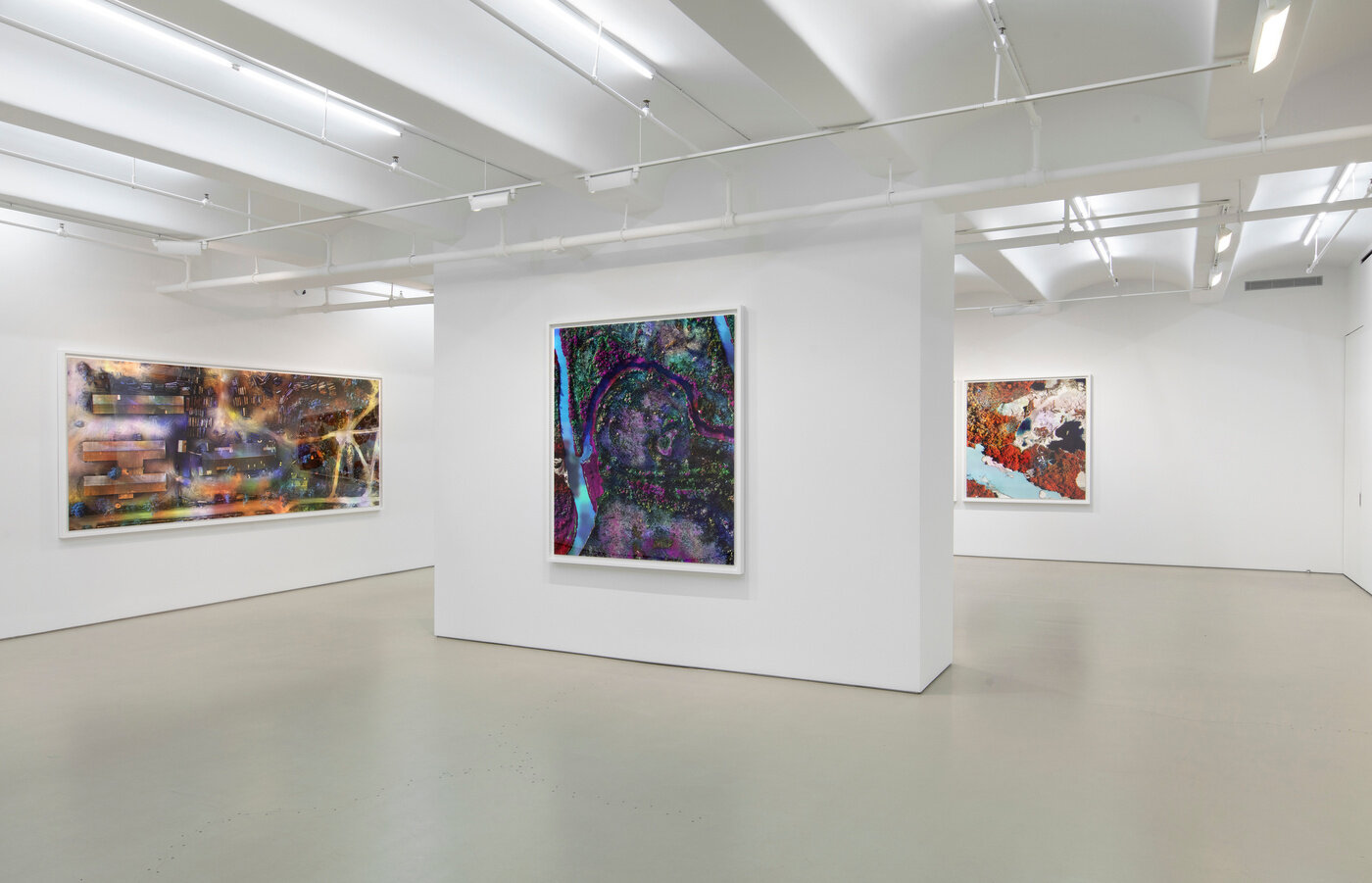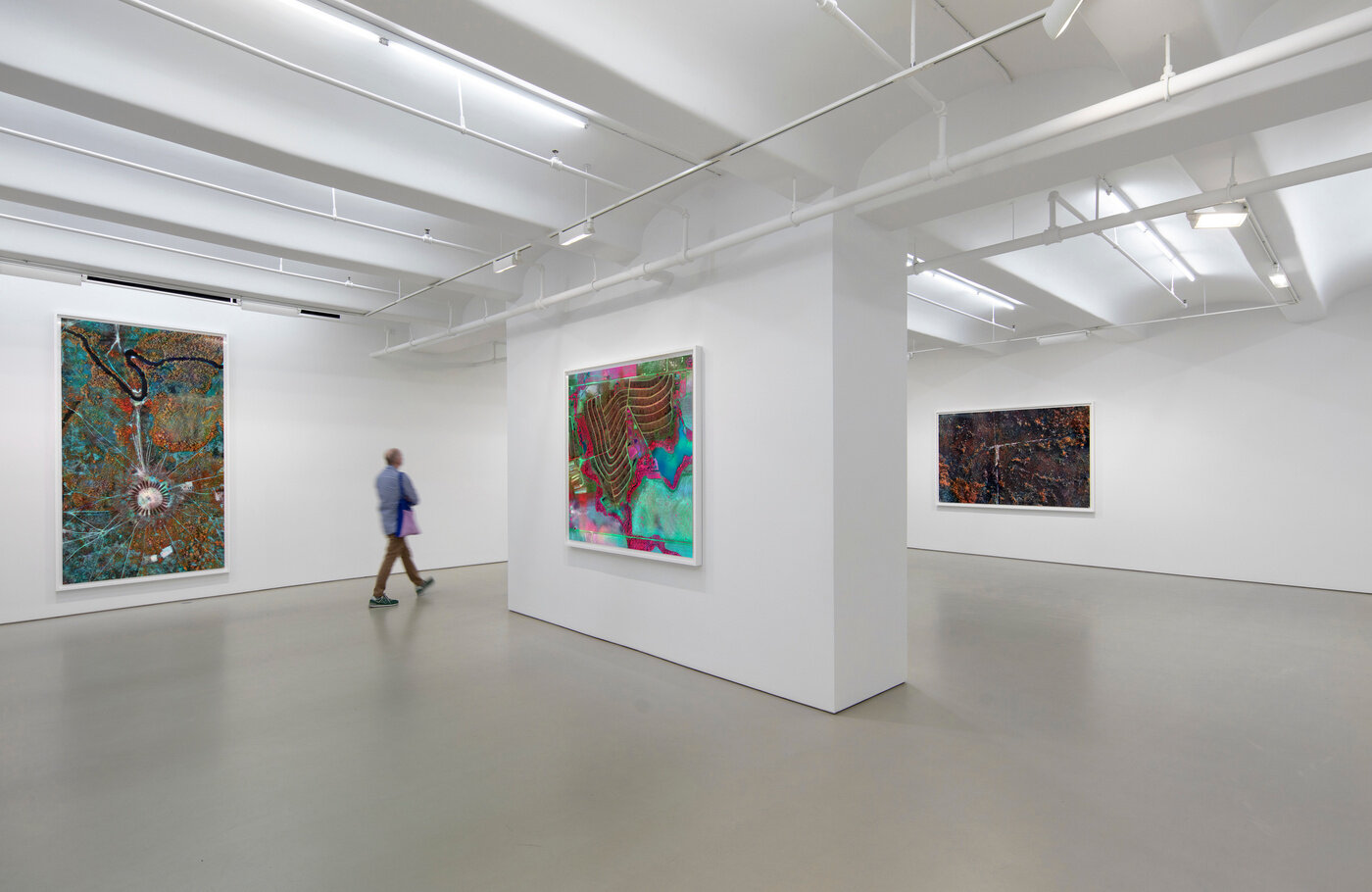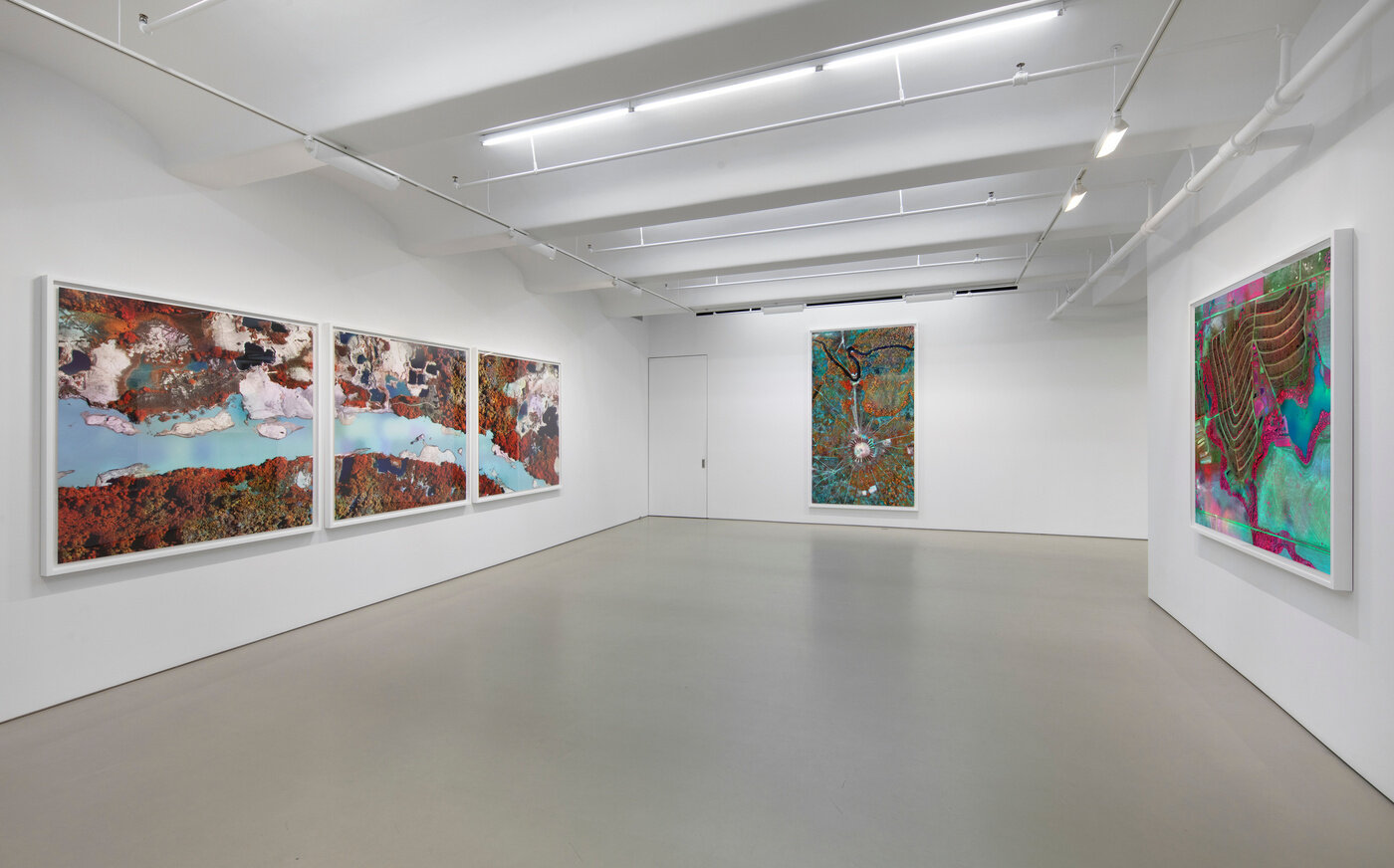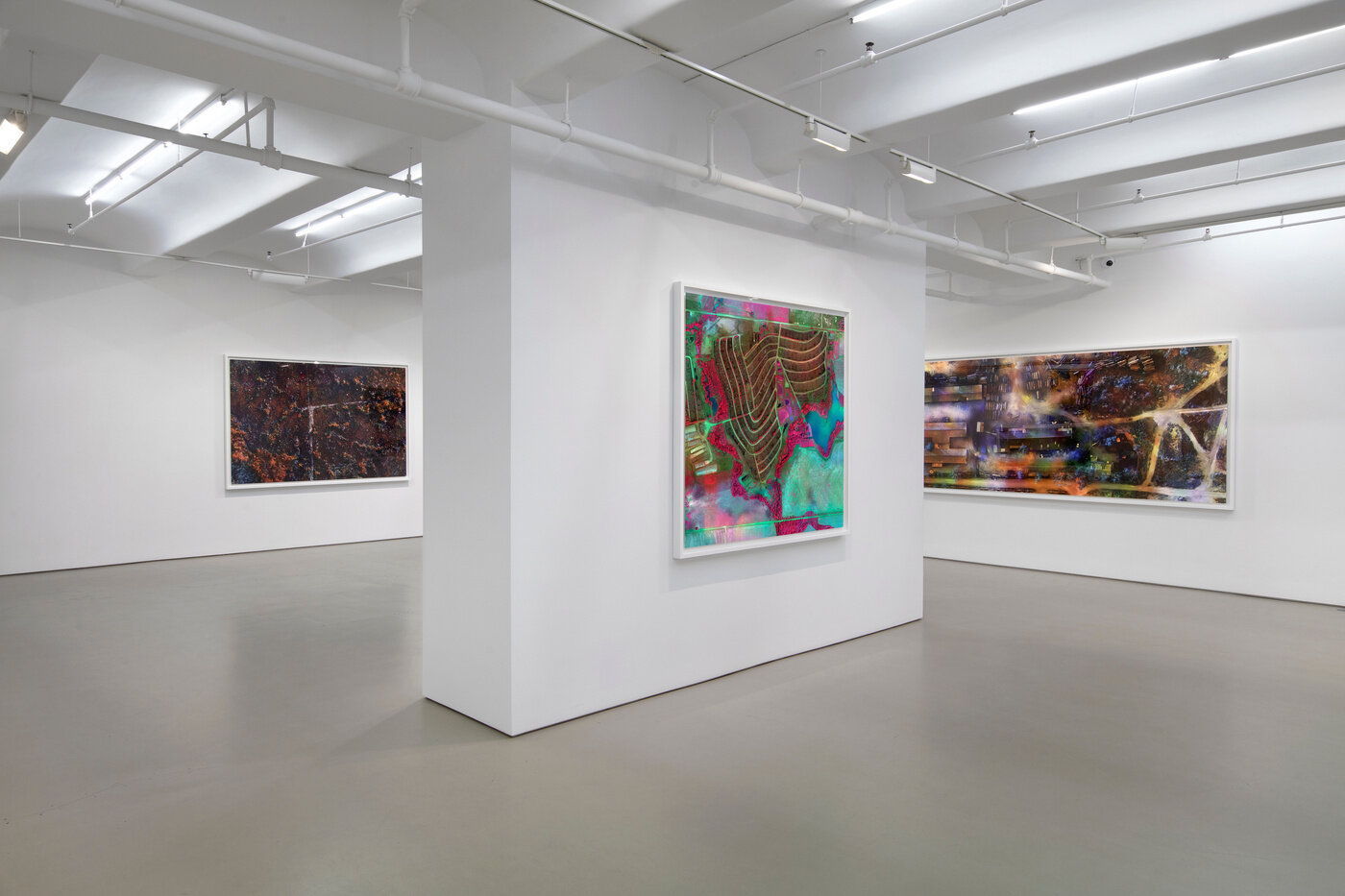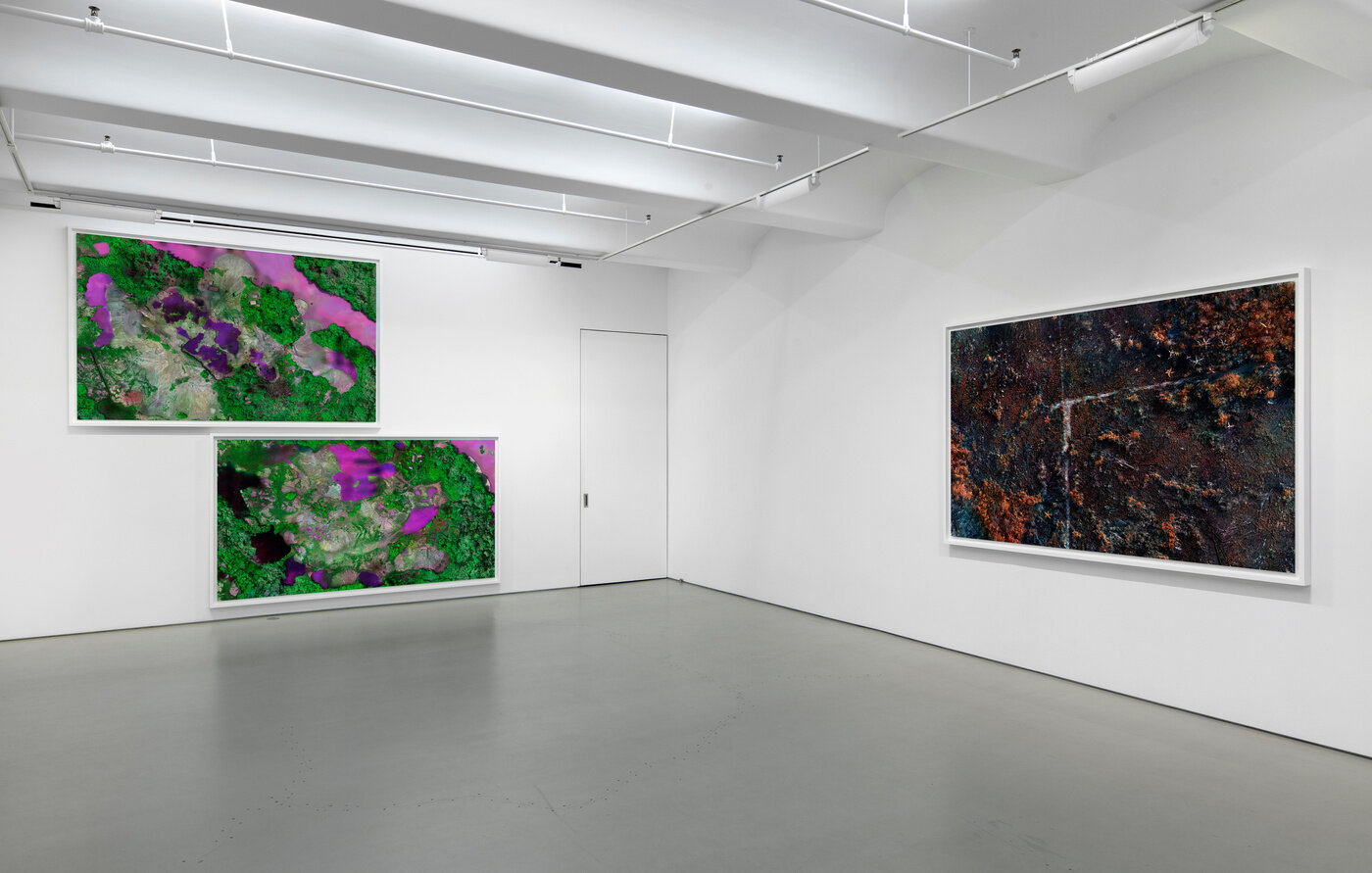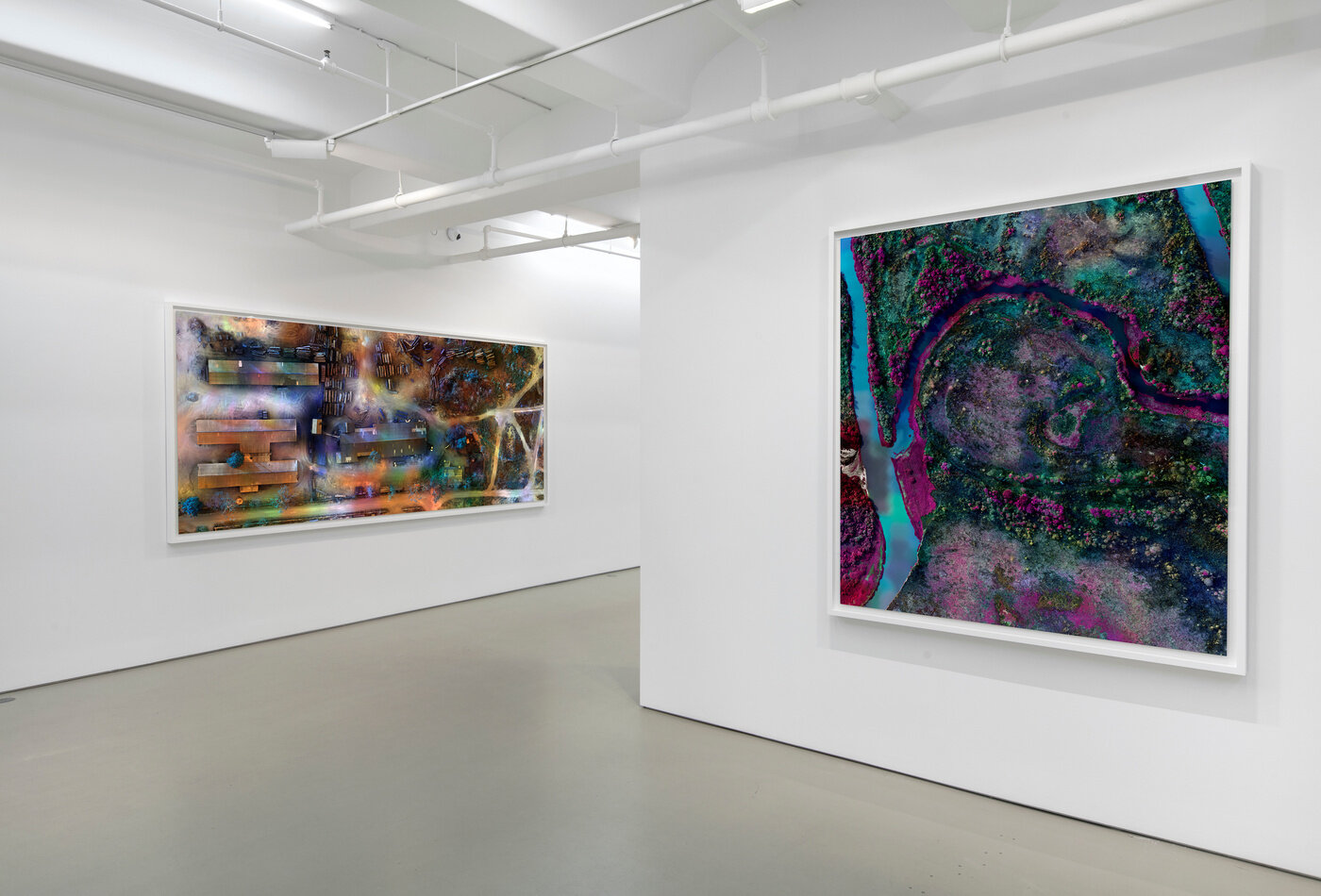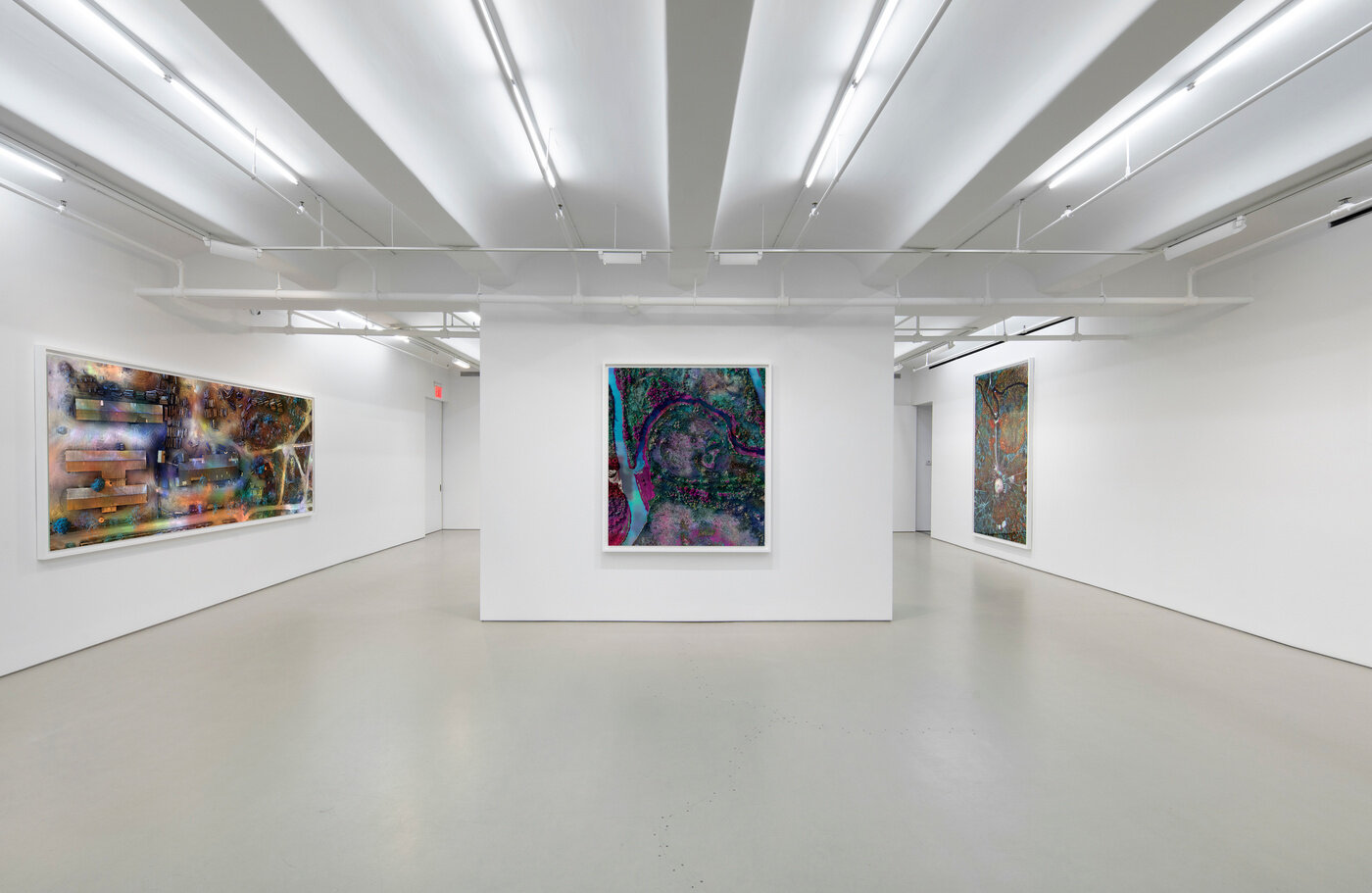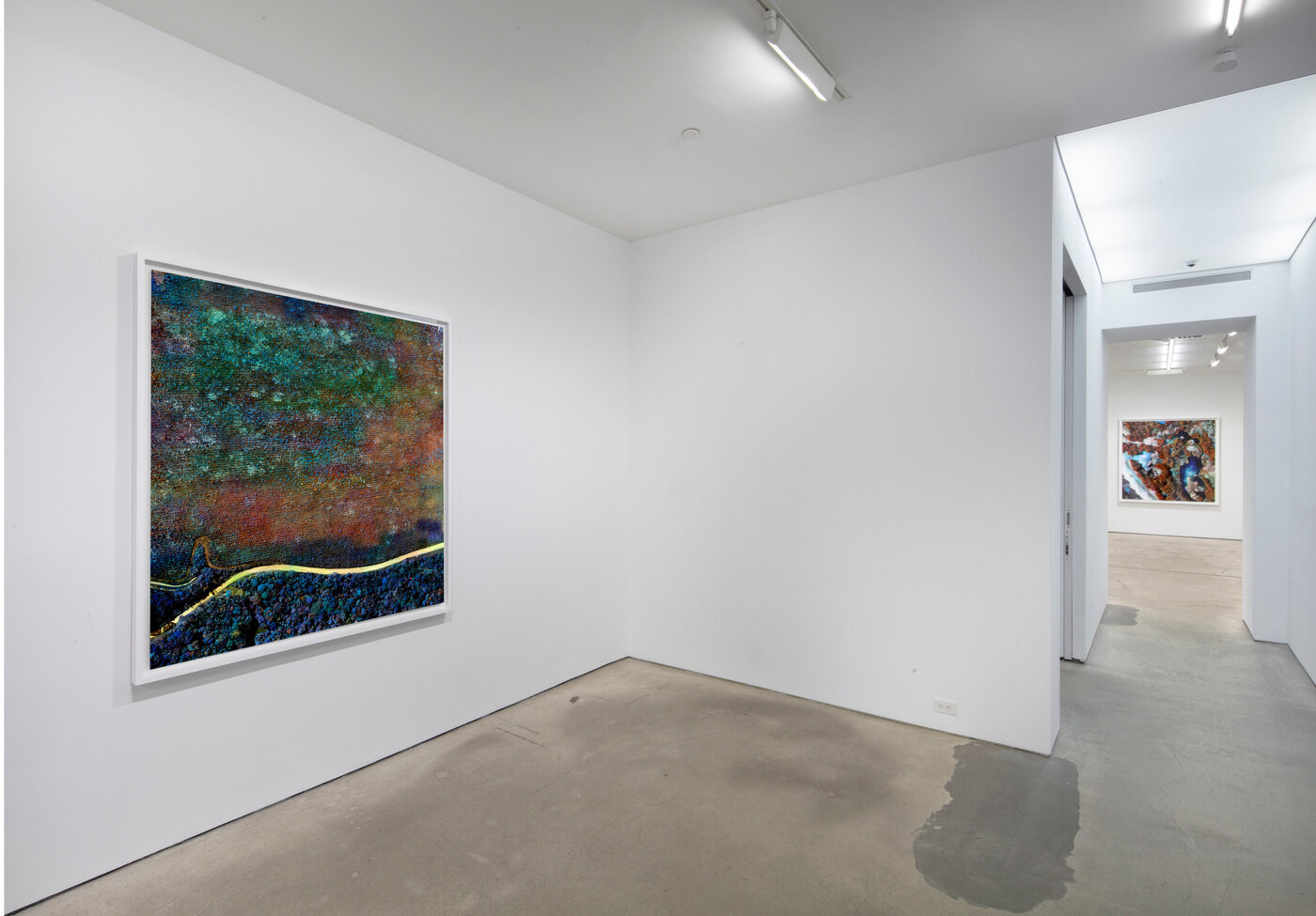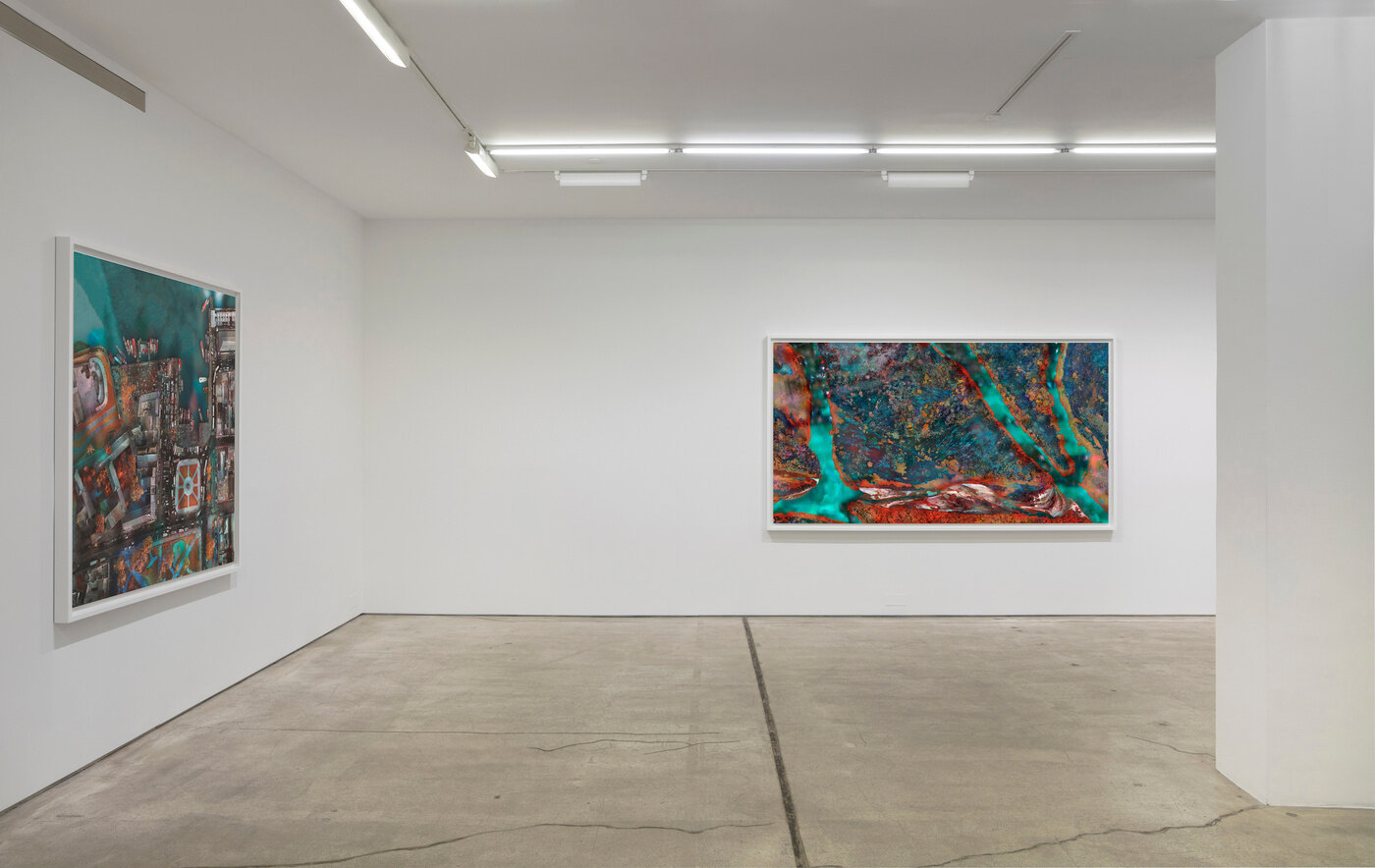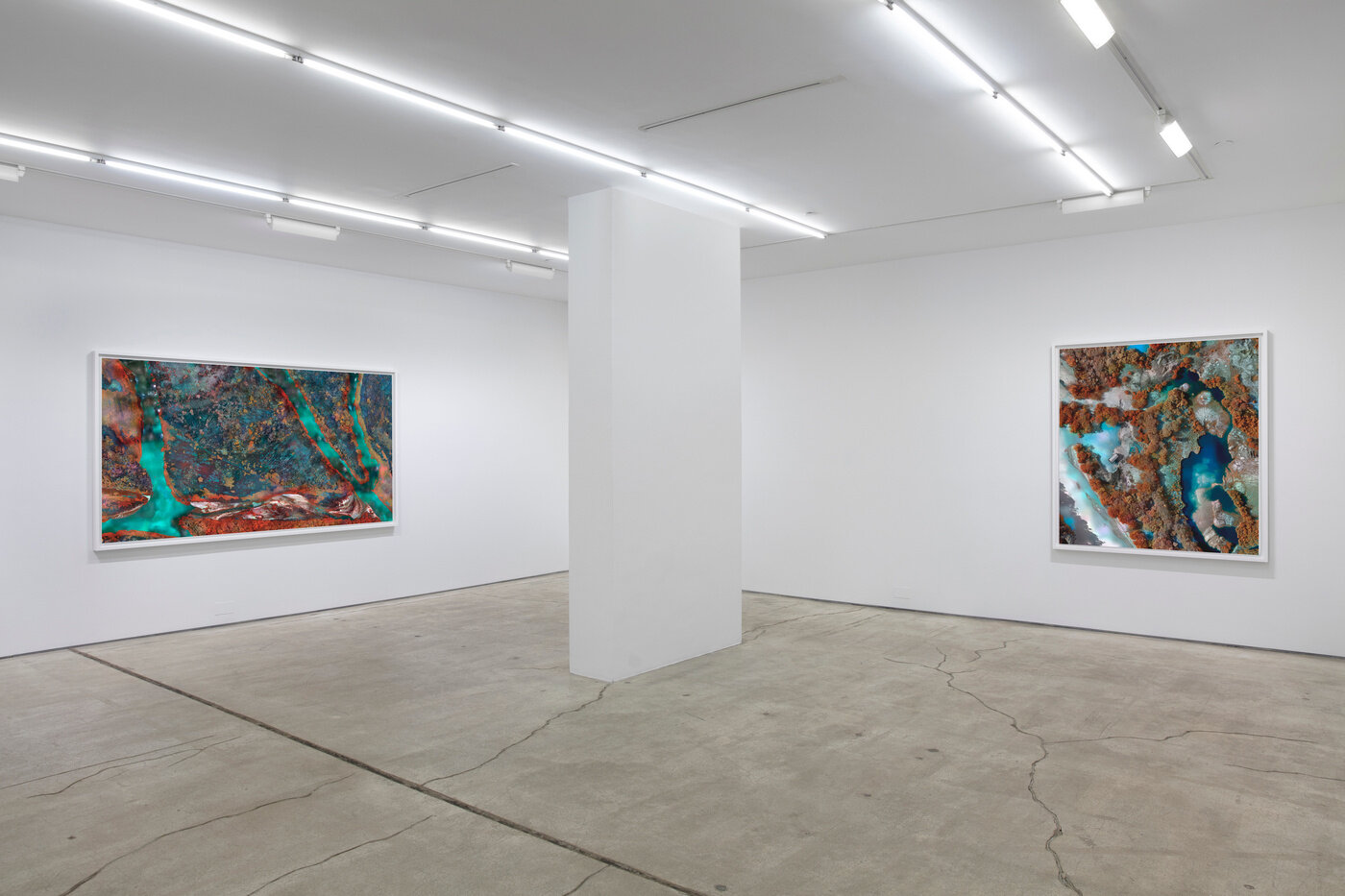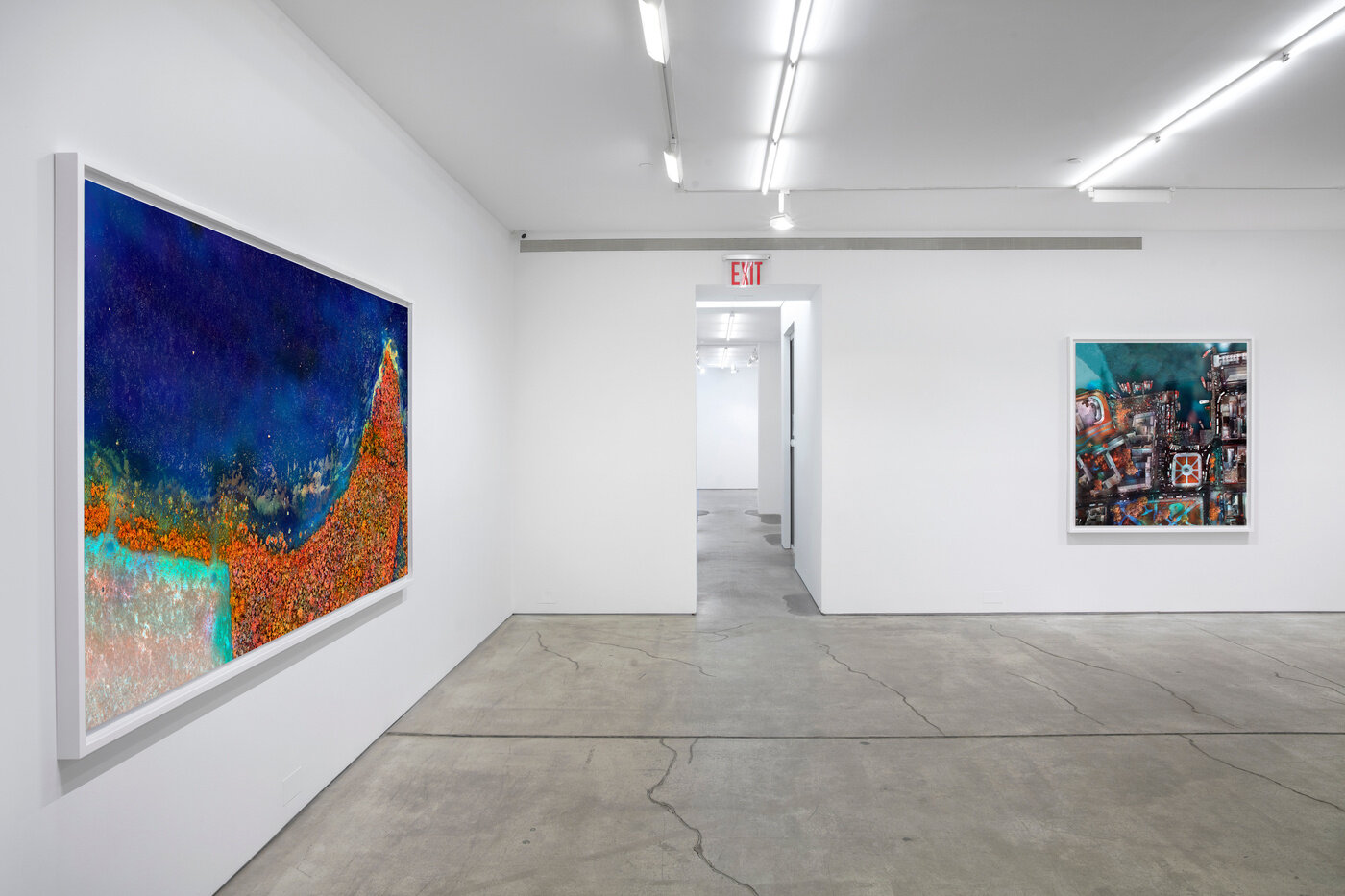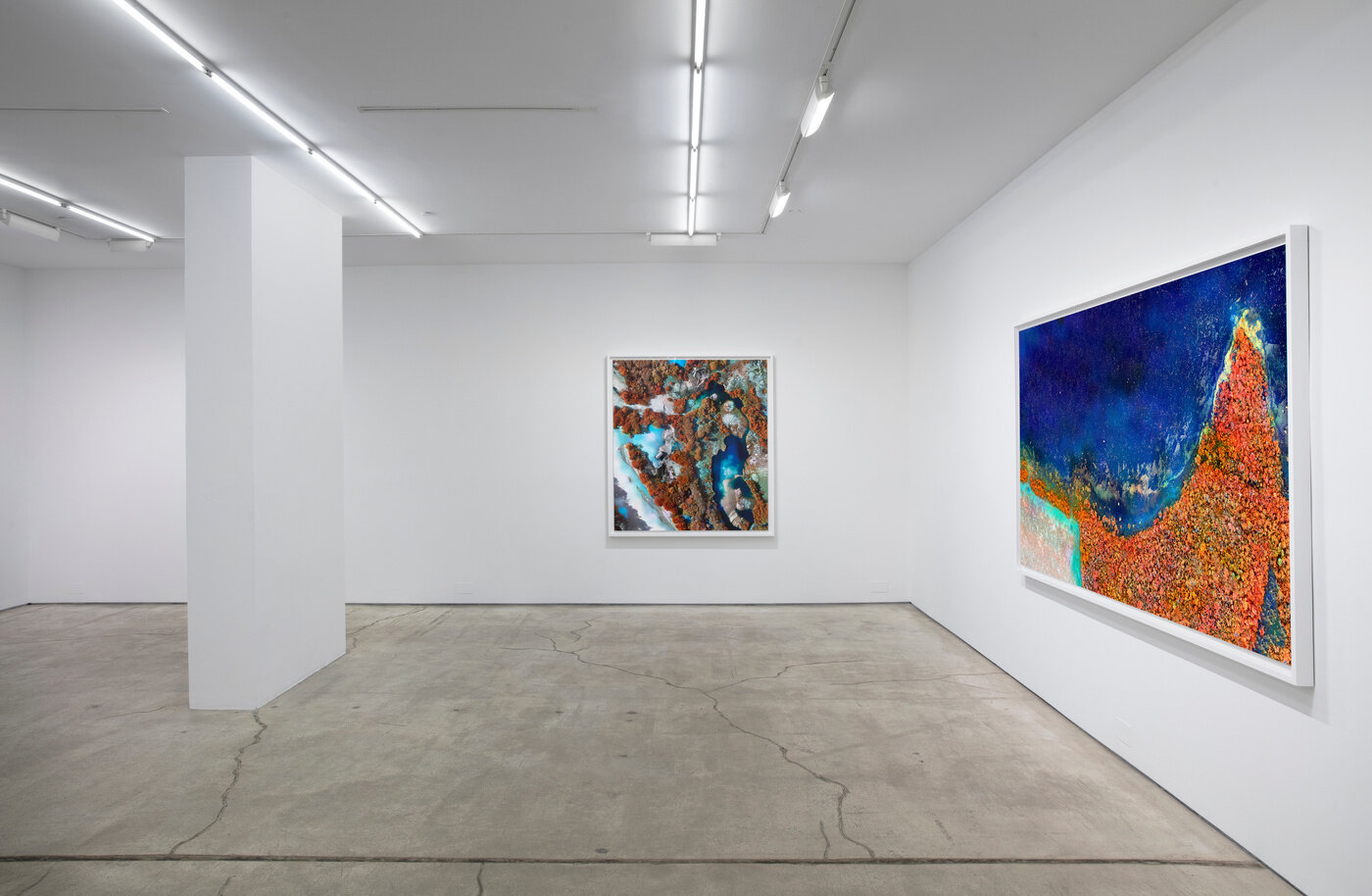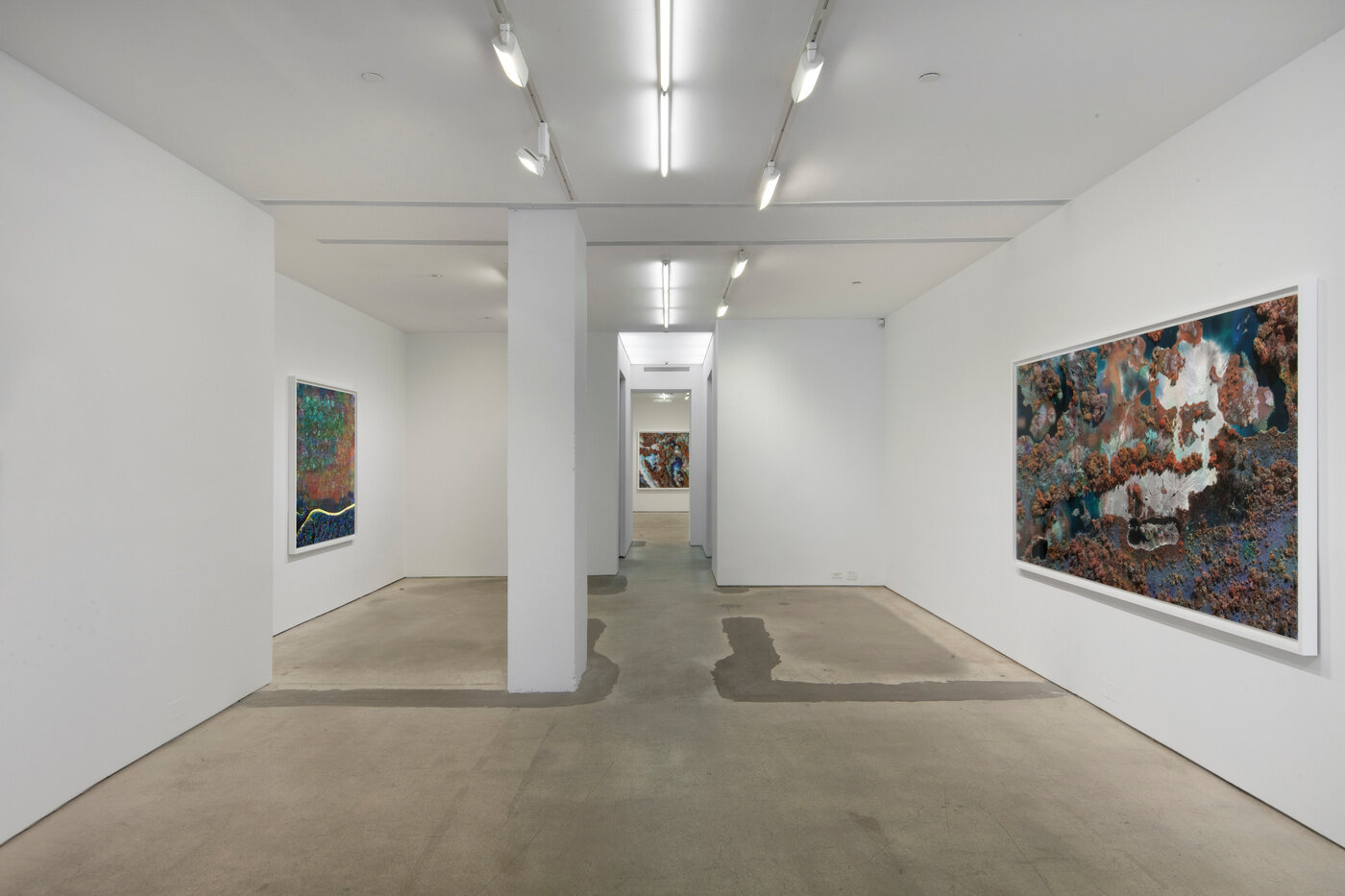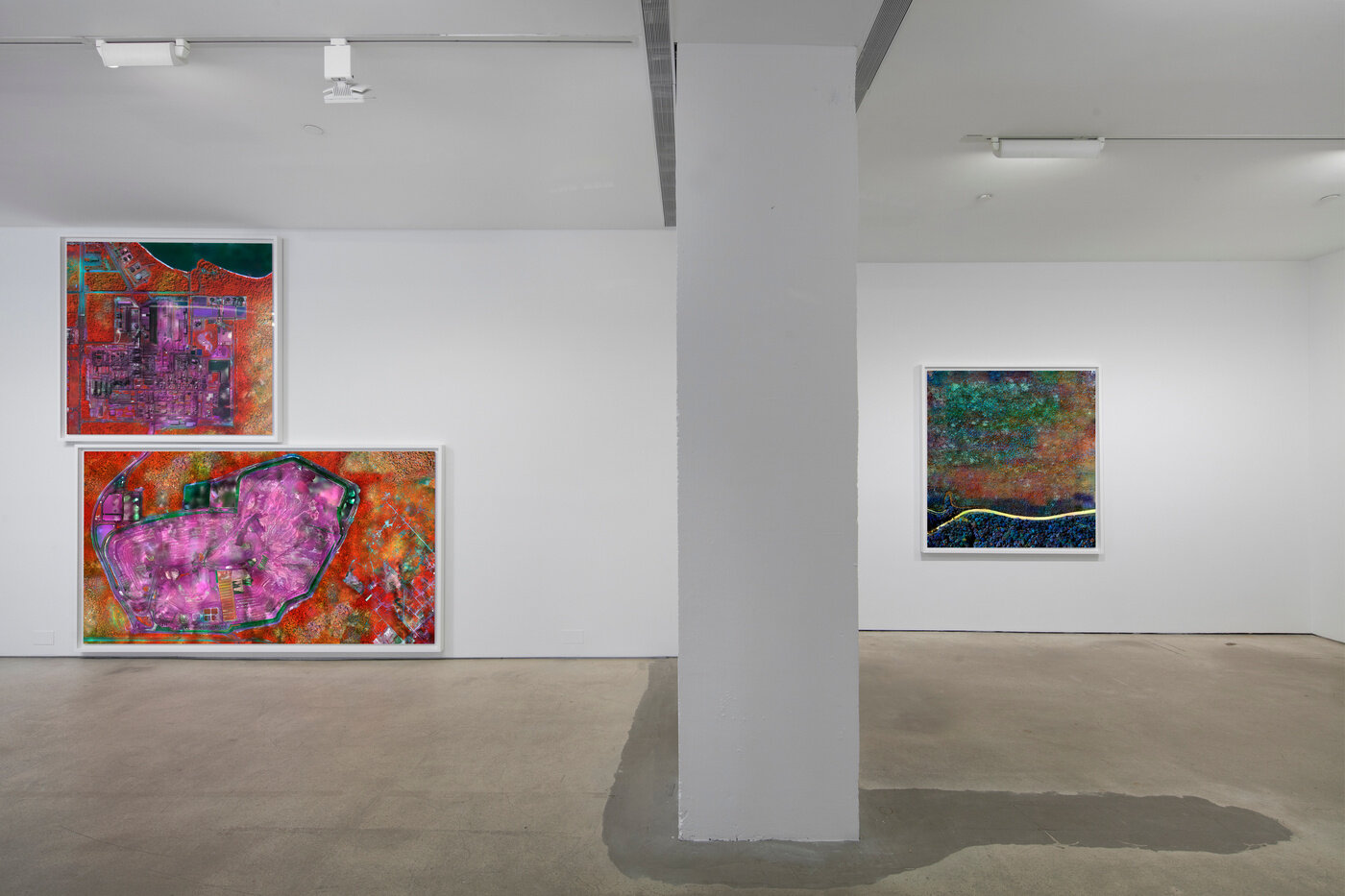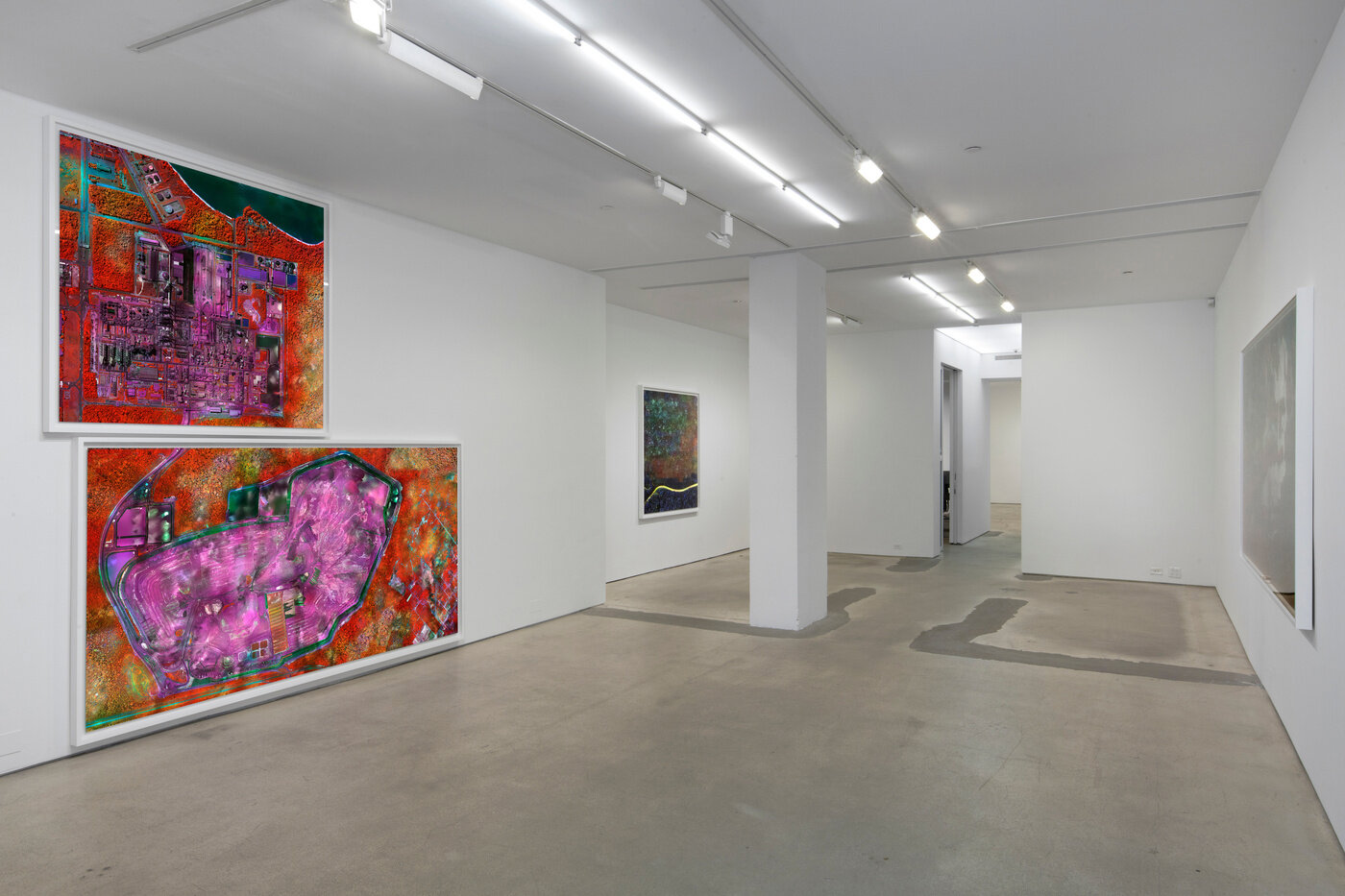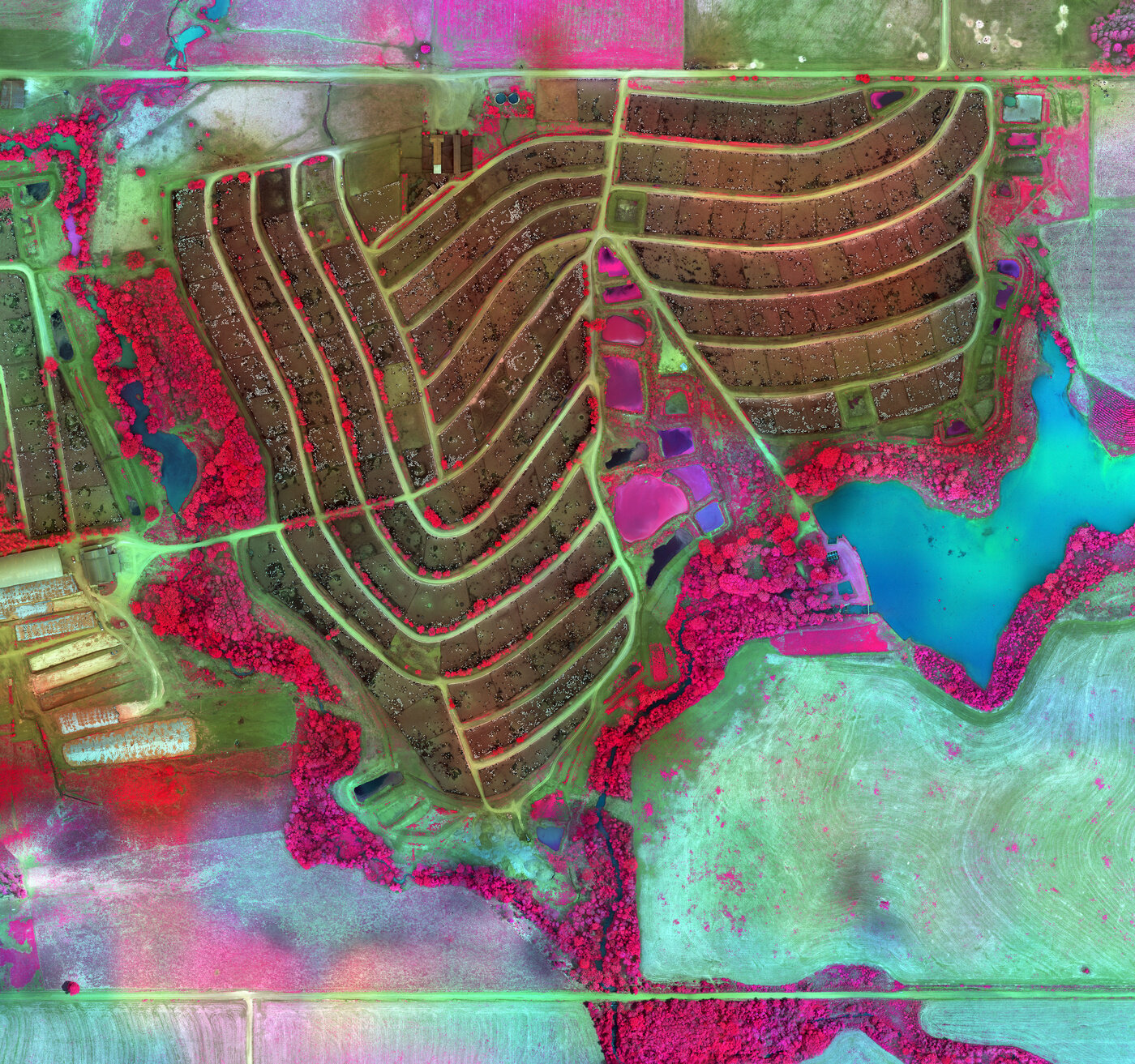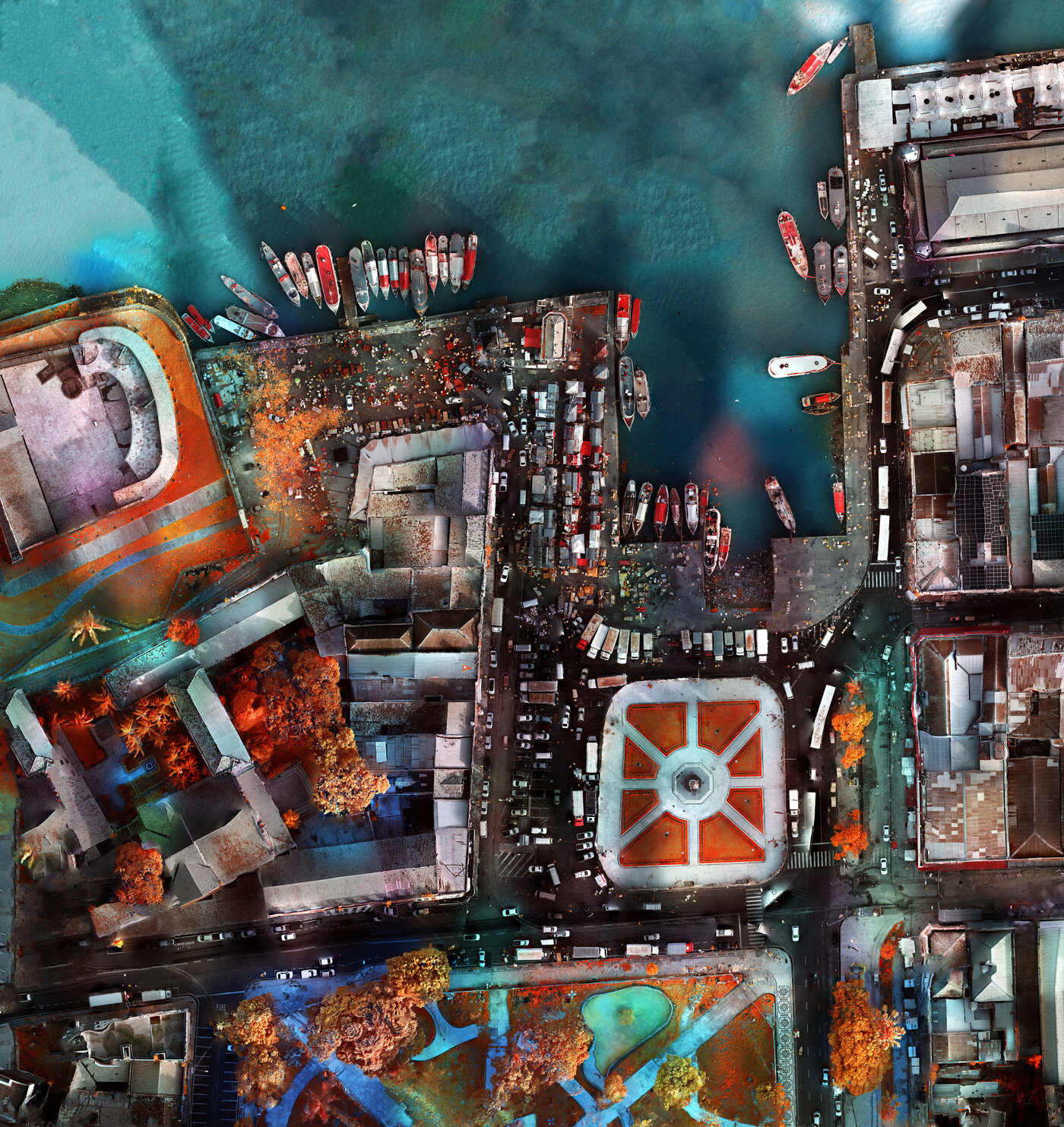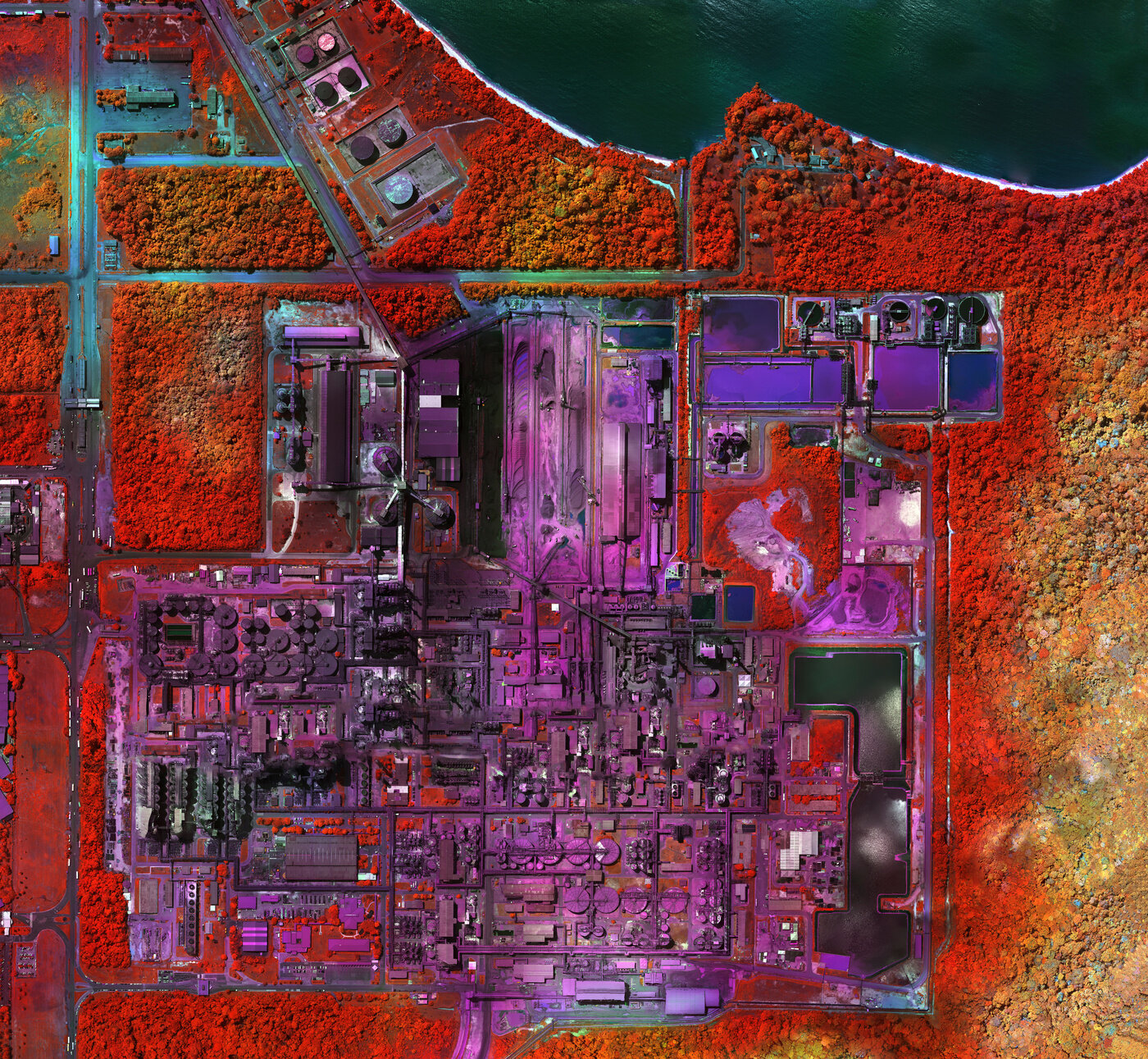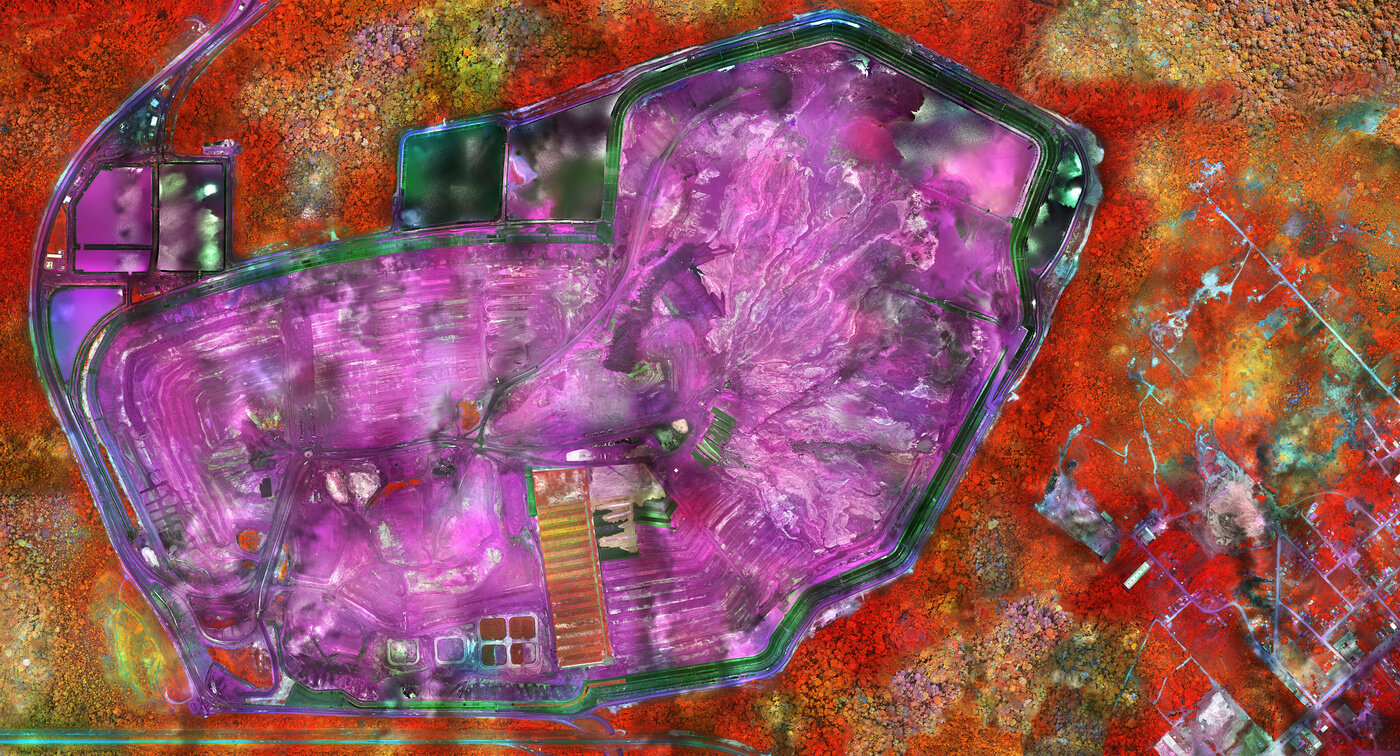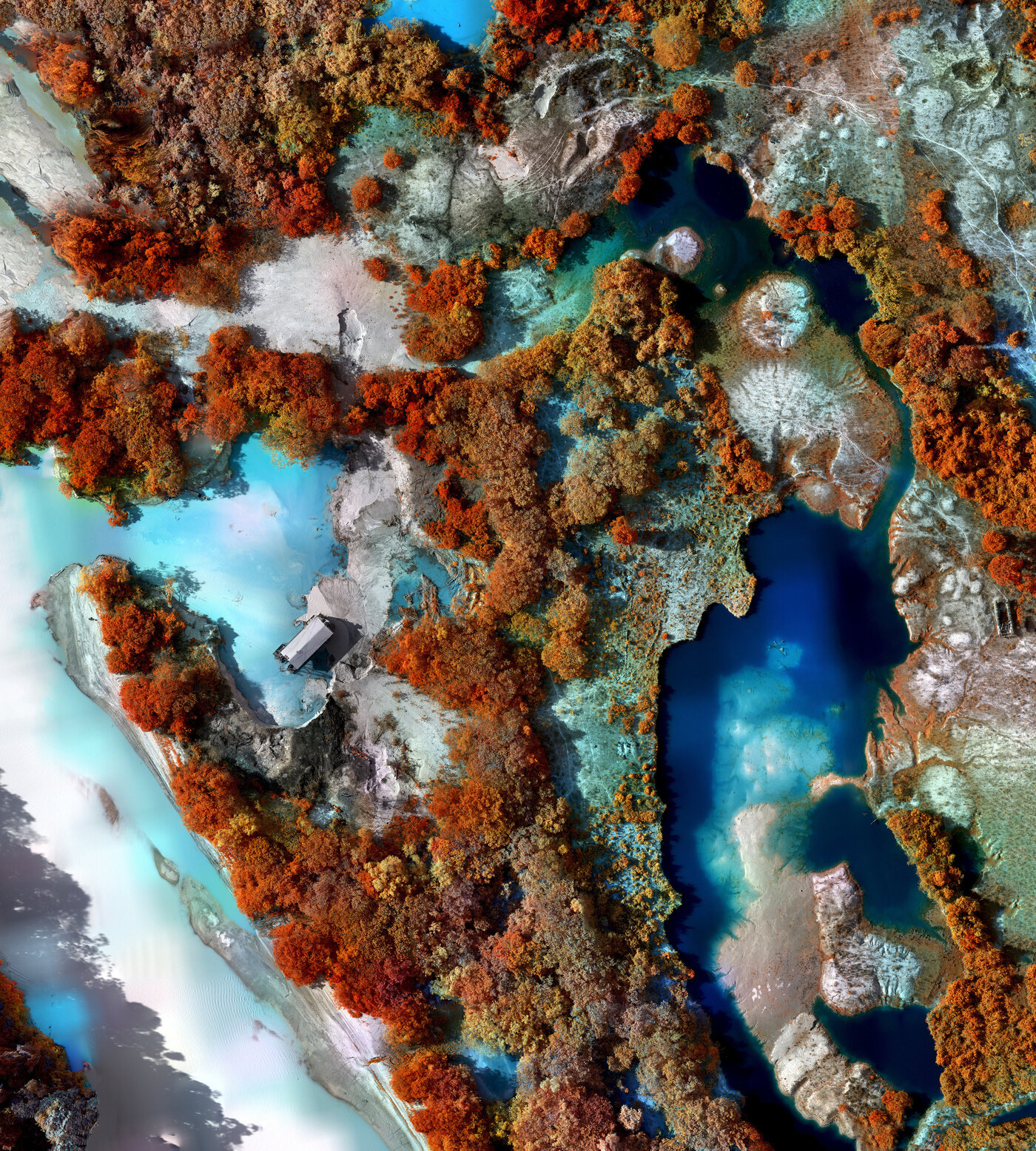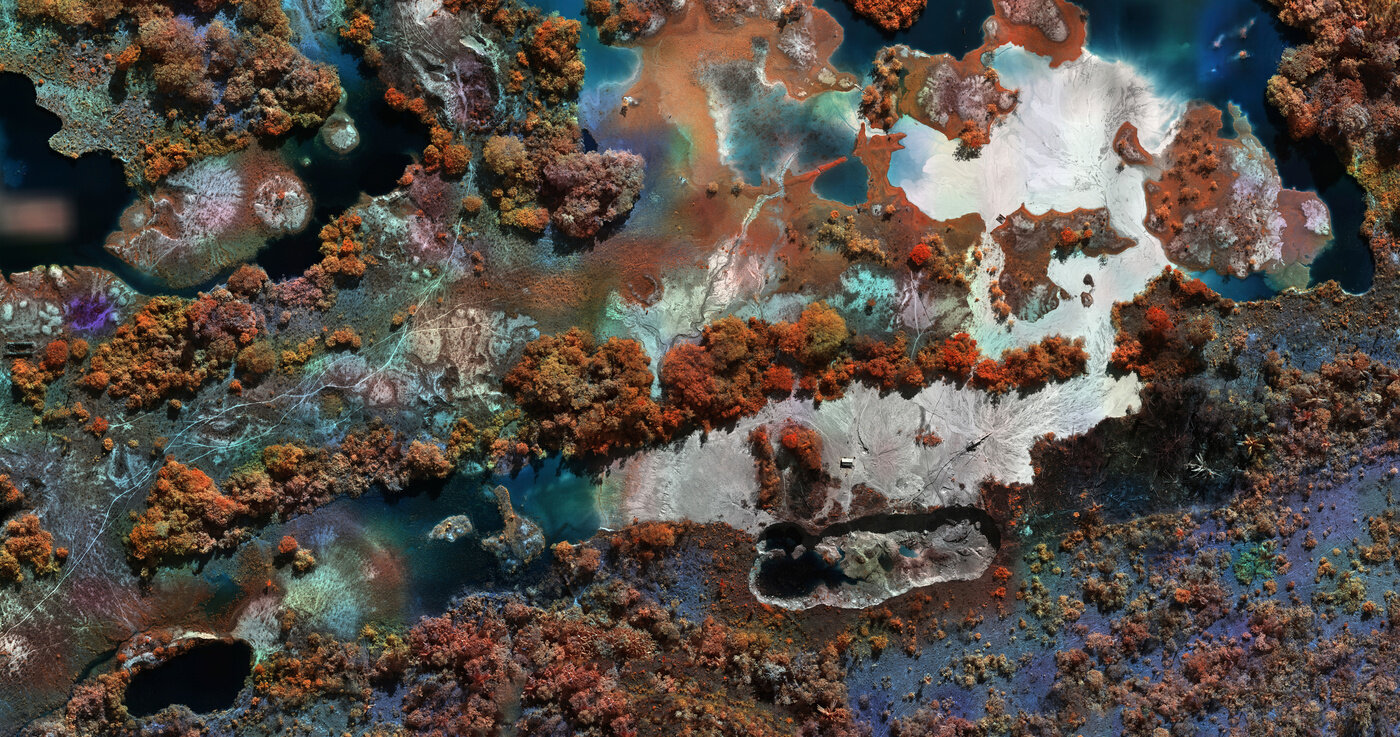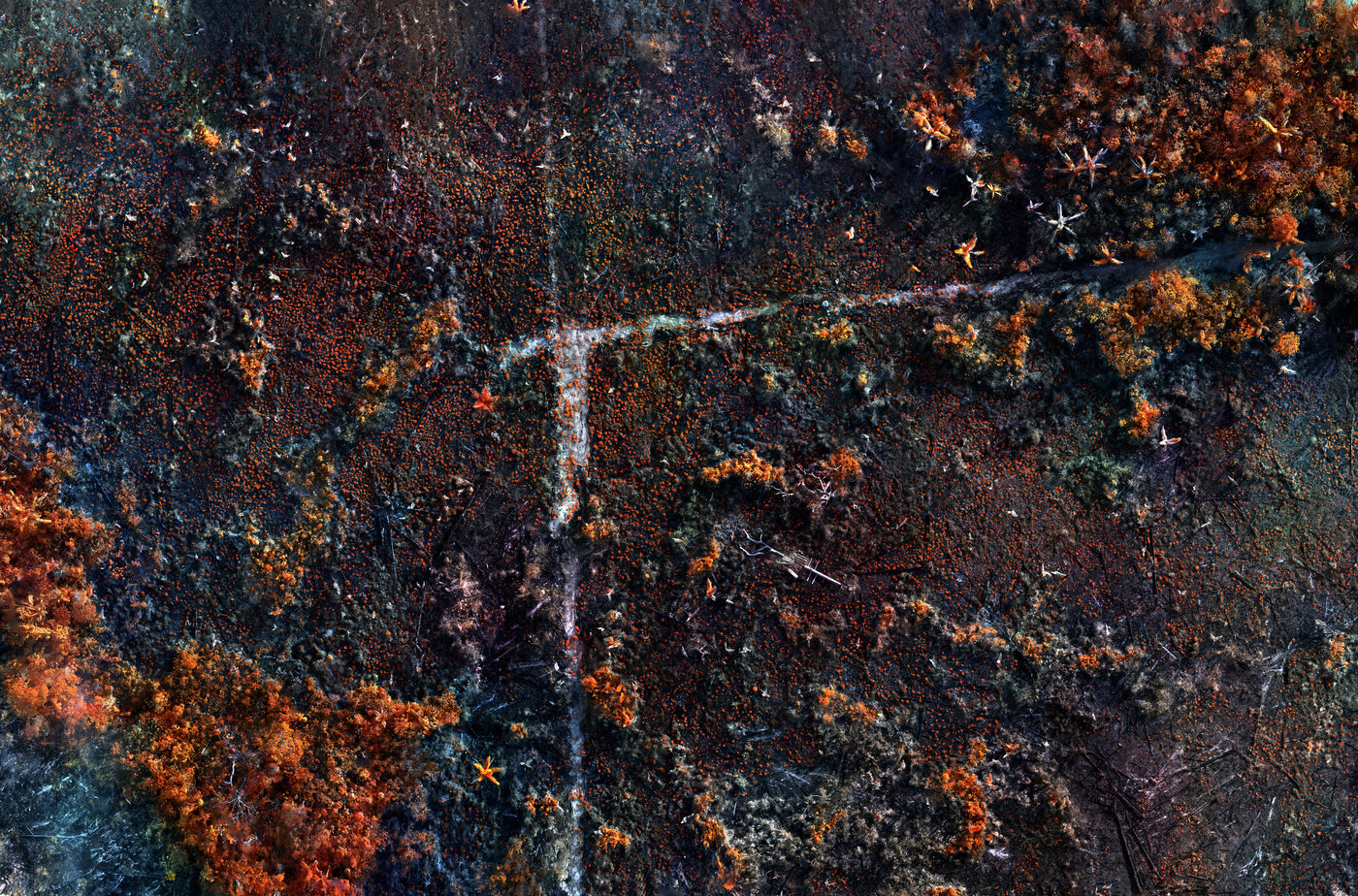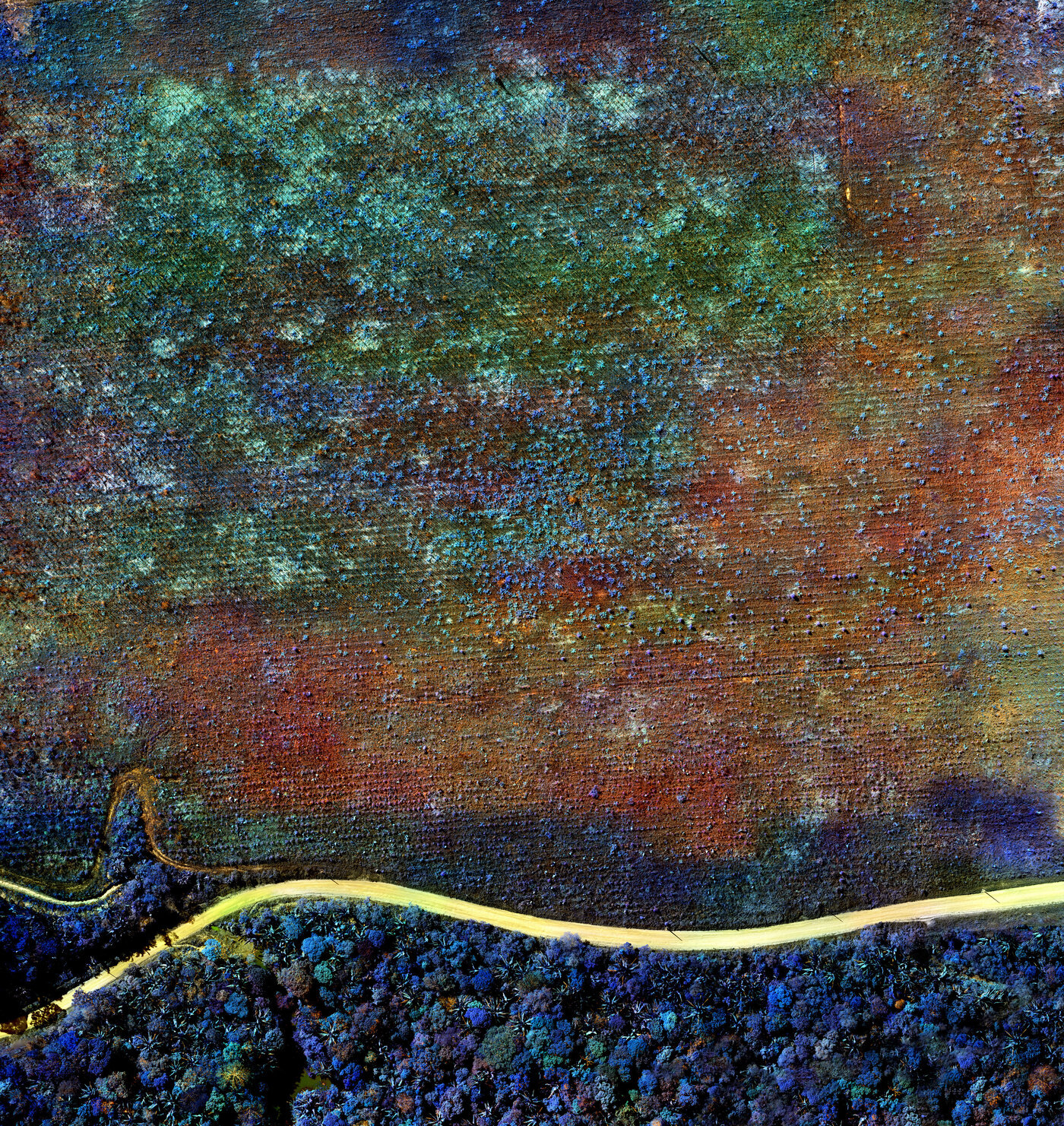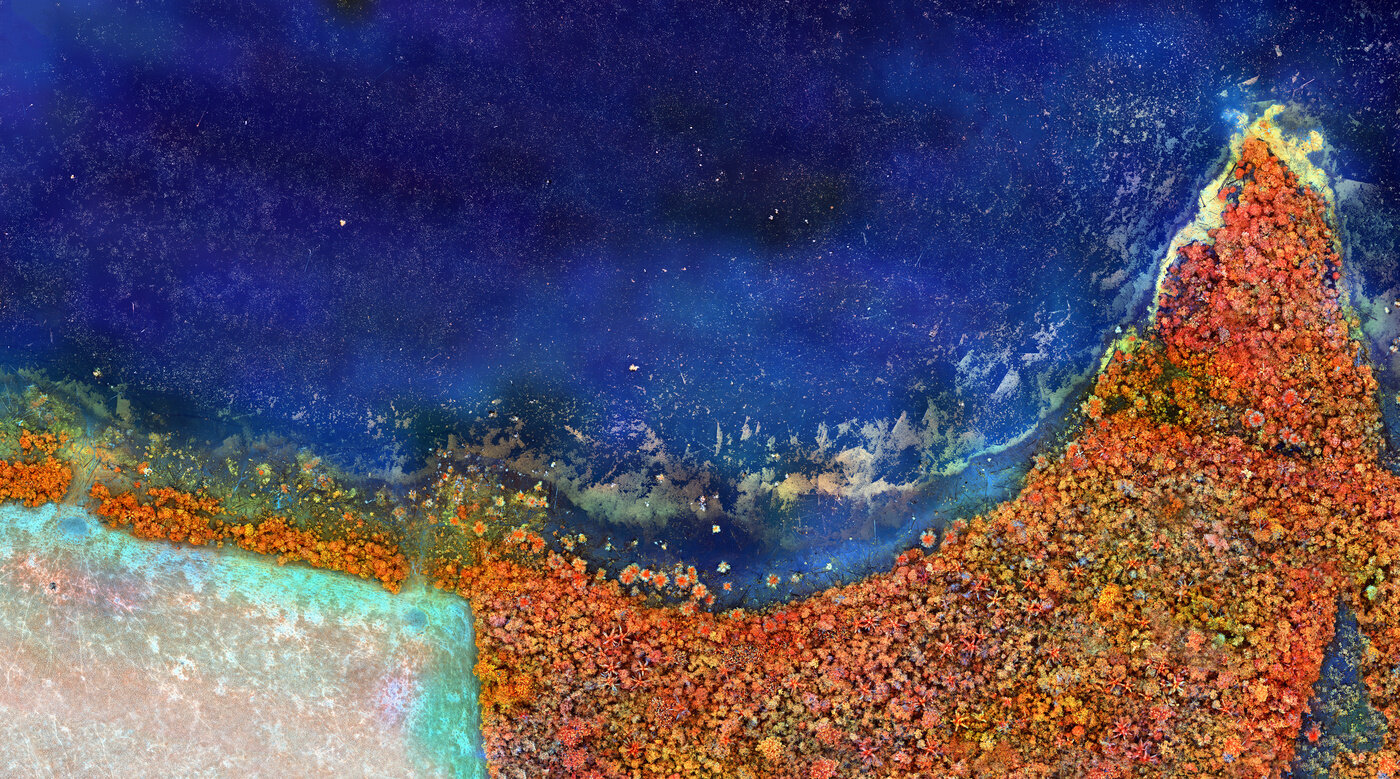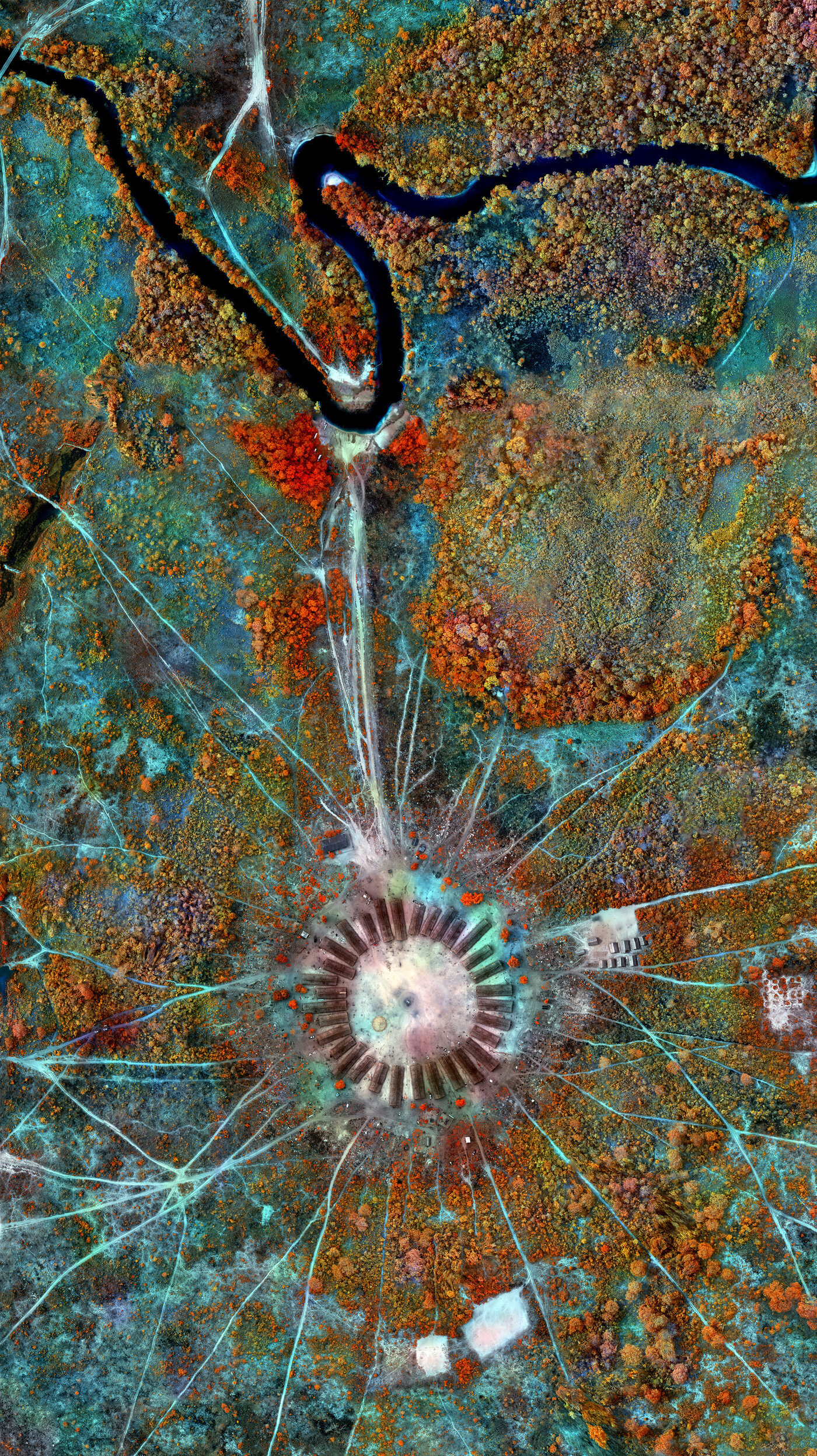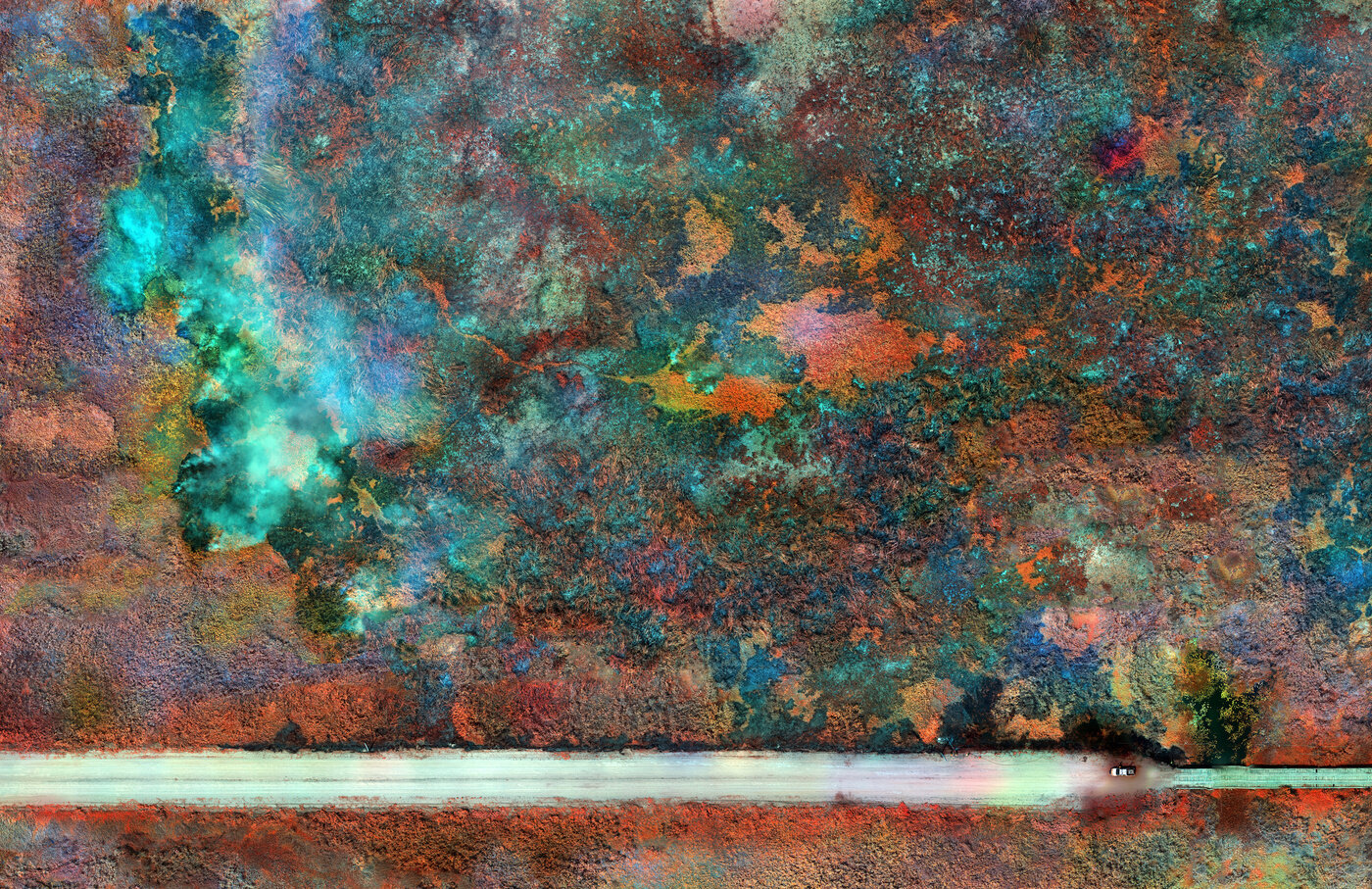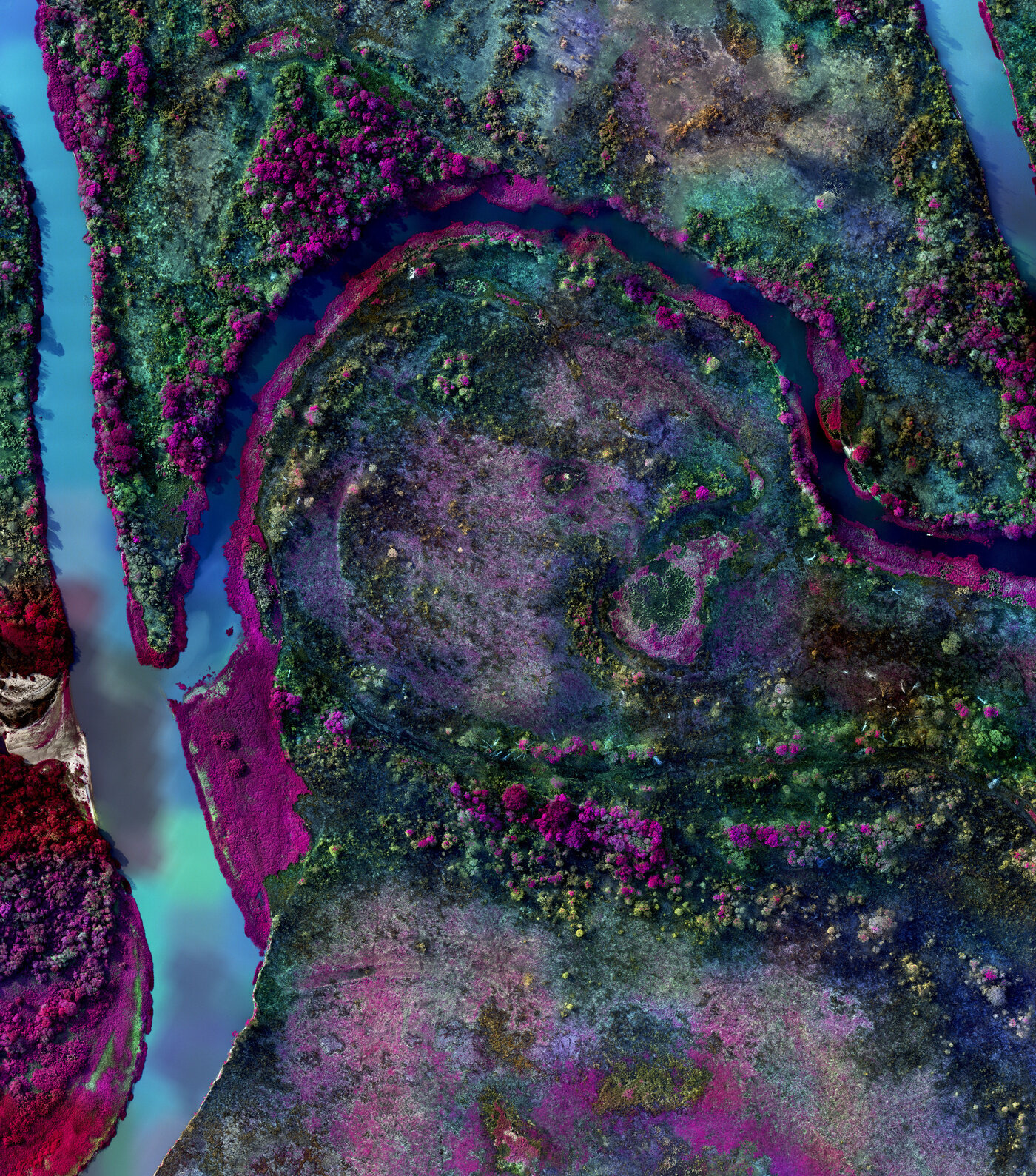Richard Mosse: Tristes Tropiques
Works (Tap to zoom)
Press Release
RICHARD MOSSE
Tristes Tropiques
April 8 – May 15, 2021
Learn more about the Hutukara Yanomami Association and help the Indigenous people to hold up the sky here.
Jack Shainman Gallery is pleased to present Tristes Tropiques, Richard Mosse’s expansive new body of work on view across the gallery’s 20th and 24th Street locations. Tristes Tropiques showcases a series of large-scale photographic maps which describe sites of environmental crimes unfolding across Brazil’s ‘arc of fire’. These vibrantly hued topographic images show frangible organic matter dominated by extractive violence at the hand of man. The colors are electric, yet, articulated over such highly detailed organic landscapes, powerfully reveal a highly vulnerable biome. They are living maps, showing signs of life, but also encapsulating forest die-back, tipping points and ecocide.
Employing geographic information system (GIS) technology, Mosse processed thousands of multispectral images captured above each site by drone to create searing maps that highlight areas of environmental attrition. Multispectral imaging is used by scientific groups to detect deforestation and ecological damage and pinpoint areas of concentrated CO2 release, toxic pollution, and other aspects of damage to the fragile ecosystem. Yet this powerful technology is also widely employed in agribusiness and mineralogy to more profitably exploit the environment. Mosse uses the medium reflexively, as an artist and a storyteller, to create maps that yield a disarming, gestural aesthetic force, while revealing traces of these complex ecological narratives, at turns geopolitical, multinational, local, and cultural, the effects of which can be difficult to perceive in time and space.
Tristes Tropiques is an example of what artist and cartographer Denis Wood has termed “counter mapping”, a form of resistance mapmaking intended to reveal endangered landscapes, describing human activities that threaten the entire Amazon and our global climate. In Subterranean Fire, Mosse’s camera vividly reveals the buried traces of fire advancing along desiccated underground roots in the Pantanal ecosystem, a quarter of which was lost to unprecedented fires last summer. The traces of subterranean fire cannot easily be seen by the human eye but are expressed here with the aesthetic power and scale of color field painting. In the diptych Juvencio’s Mine, the devastation of illegal gold mining practices carried out on a protected national forest reserve are exposed with irradiated clarity. In Aldeia Enawenê-nawê, the map reveals a recently contacted indigenous community’s cyclical engagement with their environment, one that produces little waste. Each map in Tristes Tropiques carries a wealth of data, showing the extractive processes, effects, and infrastructure along a vast, advancing front line of deforestation, land invasion, agribusiness, illegal mining and environmental crime.
Born in Ireland in 1980, Richard Mosse investigates the borders between documentary photography and contemporary art. Works from Tristes Tropiques, as well as Mosse’s critically acclaimed series Heat Maps and Infra will feature in Richard Mosse: Displaced, his first major survey exhibition, opening this spring at MAST Foundation, Bologna, Italy, accompanied by a comprehensive monograph. A second exhibition, examining his career in-depth, will open at Kunsthalle Bremen in 2022. An immersive video installation accompanying Tristes Tropiques is currently under production. Co-commissioned by the National Gallery of Victoria, Melbourne, the Westridge Foundation and VIA Art Fund, the work will debut in 2022. In association with this new project, Mosse has been awarded a 2021 remote residency with Arts at CERN in partnership with the Didier and Martine Primat Foundation and its special fund Odonata, Geneva. Past honors include the Prix Pictet (2018), the Deutsche Börse Photography Prize (2014), representing Ireland at the 55th Venice Biennale in 2013, and a Guggenheim Fellowship (2011) among others. Recent solo exhibitions include Incoming at the San Francisco Museum of Modern Art (2019), National Gallery of Art, Washington DC (2019), and the Barbican Art Gallery, London (2017).
Upcoming exhibitions at the gallery include Leslie Wayne at our 24th Street space and a group show featuring Lyne Lapointe, Hayv Kahraman, Nick Cave and Carlos Vega at our 20th Street space, both opening May 20, 2021.
Gallery hours are Tuesday through Saturday from 10am to 6pm. For press inquiries please contact Kate Morais, SUTTON, kate@suttoncomms.com, +1 212 202 3402. For all other inquiries please contact the gallery at info@jackshainman.com.
“The conquest of the forest began in earnest in the seventies, after Brazil’s government, which was then a military dictatorship, carved a highway into the Amazon and encouraged people to move in. Since then, millions of settlers have founded towns and cities, built roads, dammed rivers, and burned forests, ultimately clearing an area larger than France.
…
Bolsonaro, a former Army captain whose followers call him the Legend, is an unabashed racist, homophobe, and misogynist. A climate-change denier, he came to power with a vehemently anti-environmentalist message, supported by a powerful lobby known as “the three B’s”: Bibles, bullets, and beef, meaning evangelicals, gun advocates, and the agribusiness industry. Bolsonaro has complained for years that indigenous protections are a senseless brake on development. “The Indians do not speak our language, they do not have money, they do not have culture,” he once said. “How did they manage to get thirteen per cent of the national territory?” Before he was elected, he described the Amazon as “the richest area in the world” and vowed, “I’m not getting into this nonsense of defending land for Indians.””
-Jon Lee Anderson, “Blood Gold in the Brazilian Rain Forest,” New Yorker, November 4, 2019
